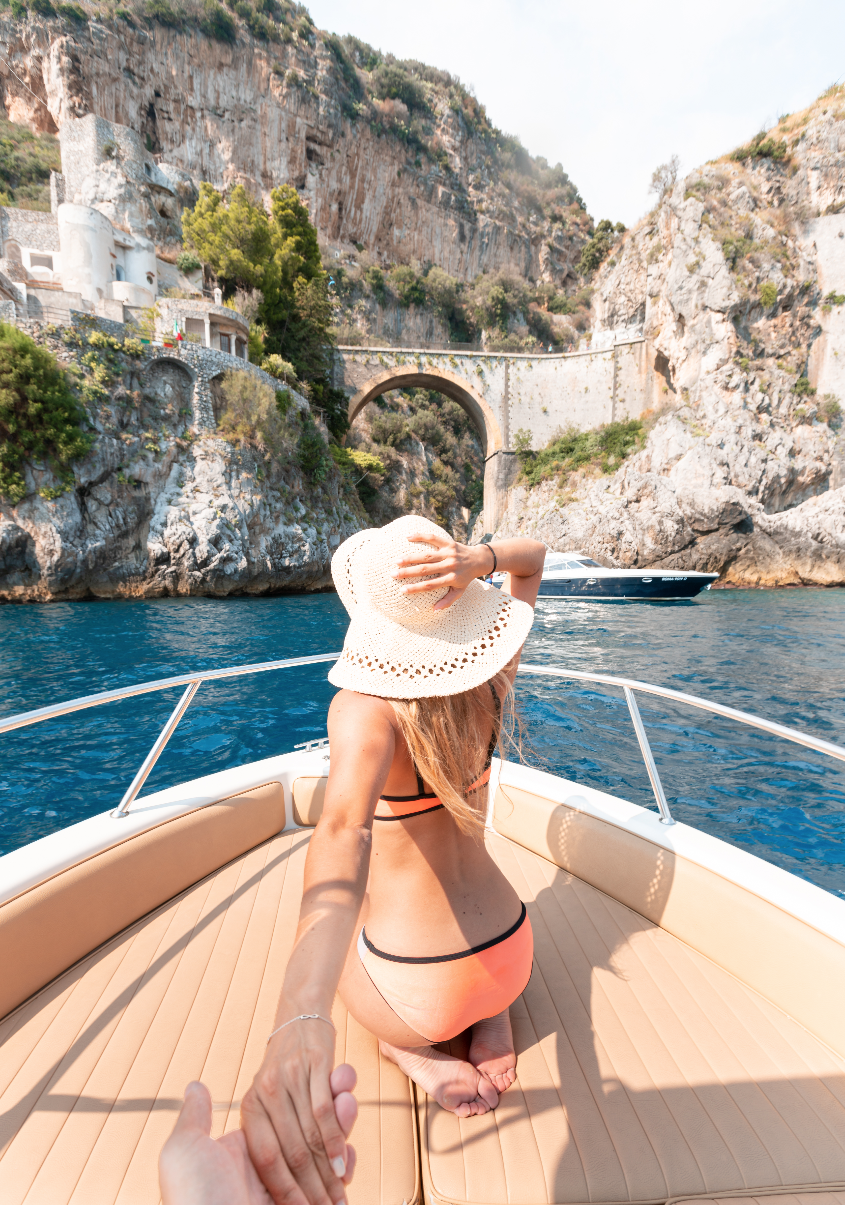
Looking for a location for a romantic getaway? Wanting to visit the Amalfi Coast just for a long weekend?
Well after being there for our Mini-Moon, I can ensure you it’s possible and even if you have only three days, it’s enough time to see the main things there are to see.
Here are some helpful tips and information so you can make the most of a short stay on one of the most beautiful coastlines in Italy.
DAY ONE
We were staying in Ravello, and it really worked out well to us to have it as a base. On the side of being beautiful, it’s a little less touristy than the more famous Amalfi and Positano hence a bit quieter especially in the evening. Thanks to its higher position it offers stunning views , with the sea at the bottom of colourful hill drops.
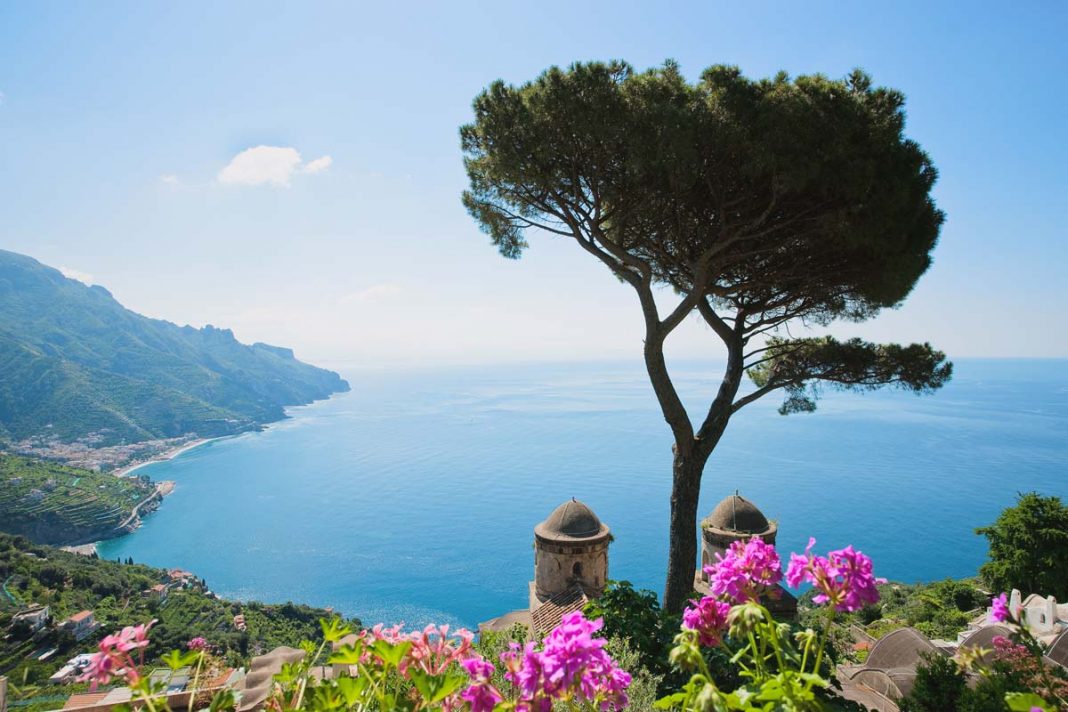
On the morning of our first day we visited the main square and walked across the little stone alleyways, full of ceramics and hand-made goods shops. At midday we met the guy of the car rental company to collect our scooter (Amalfi New Service) – an asset that I really recommend if you want to efficiently tour the Amalfi Coast. It was €50 per day and saved us lots of scratches and potential side mirror loss in our car – if you look at every car in the Amalfi coast they have no left mirrors. I personally wouldn’t recommend to rely on the bus to travel from a city to the other, we only took it once but our experience was horrible: claustrophobically packed of people, didn’t really gave us the impression to be safe either. To be fair though it was the end of August, which is peak season, so your experience of it might be better if you choose to go on a less crowded time of the year.
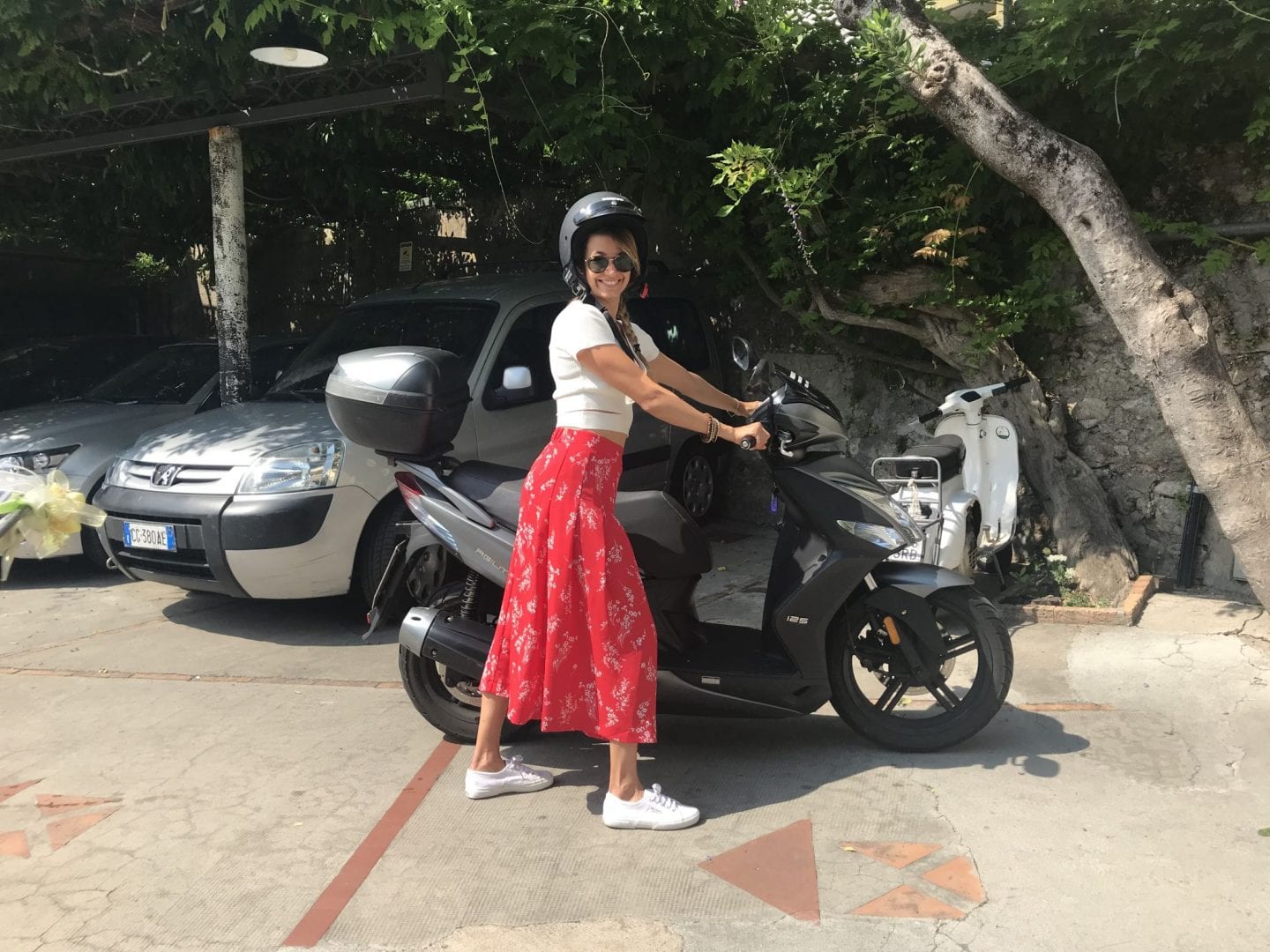
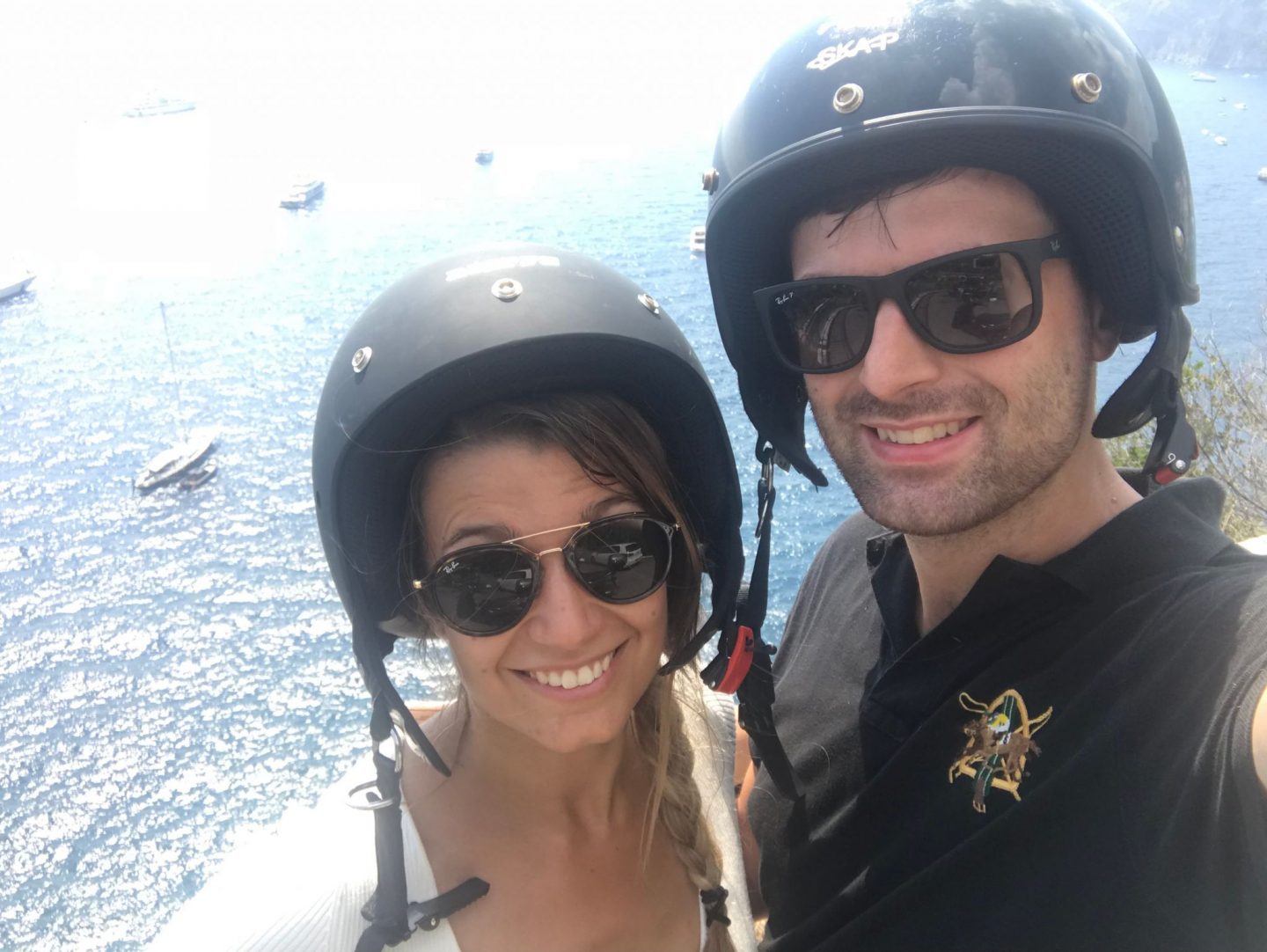
Having the scooter made all the difference and allowed us to be flexible and stop wherever we wanted, even just to take pictures.
We decided to start our itinerary with the little, less known towns and leave Amalfi and Positano last.
So we drove on the the road of 1000 bends – I counted, the name is accurate! – and arrived at Vietri sul mare, the eastern doorway to the Costiera, coming from Salerno. This little gem is famous for the ceramic production. The colourful “ceramica di Vietri” renowned all over the World, is a tradition dating back to the 15th century. Definitely it worth while a stop and a visit to the cute shops and maybe some shopping for goods and souvenirs.
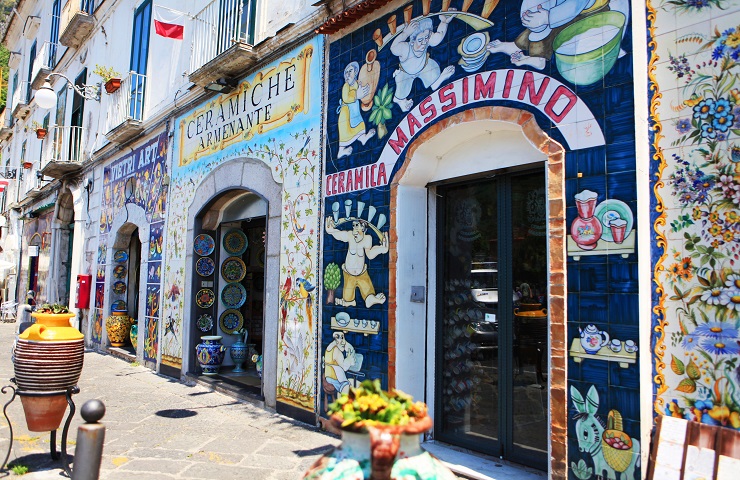
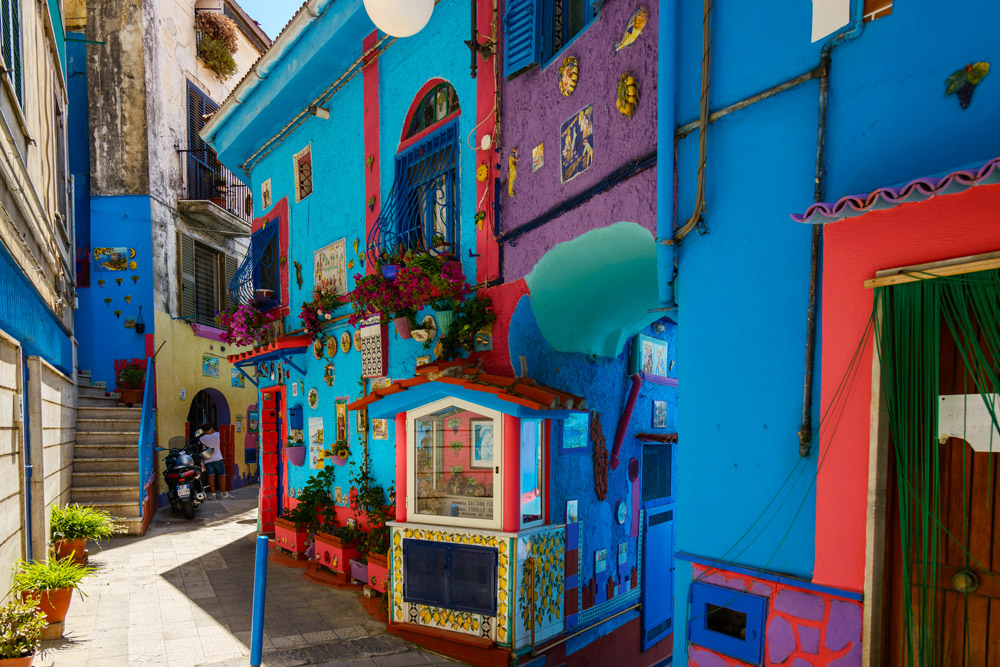
We then carried on our journey towards west and encounter the little village of Cetara.
Cetara is a quintessential Mediterranean fishing village: a handful of houses clustered around a colourful domed Church, a small port and a beach lined with bobbing fishing boats. This little town is famous allover the world for the fresh tuna caught using the traditional nets and the “Colatura di Alici” (anchovy syrup). You truly don’t want to leave without tasting a steaming plate of “spaghetti con colatura”.
We had our lunch at the restaurant L’Acqua Pazza, right in the main square, which I’d definitely recommend.
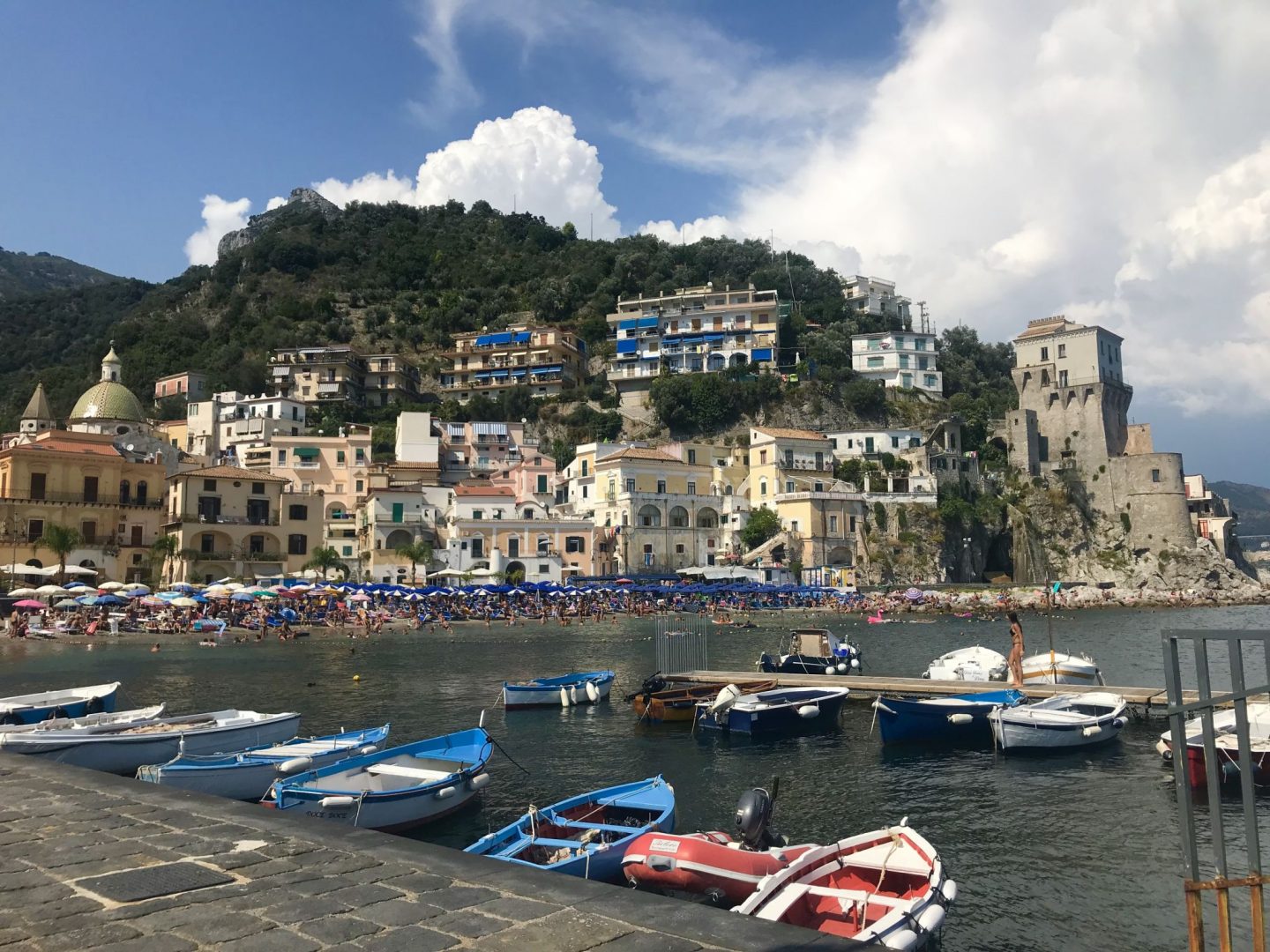
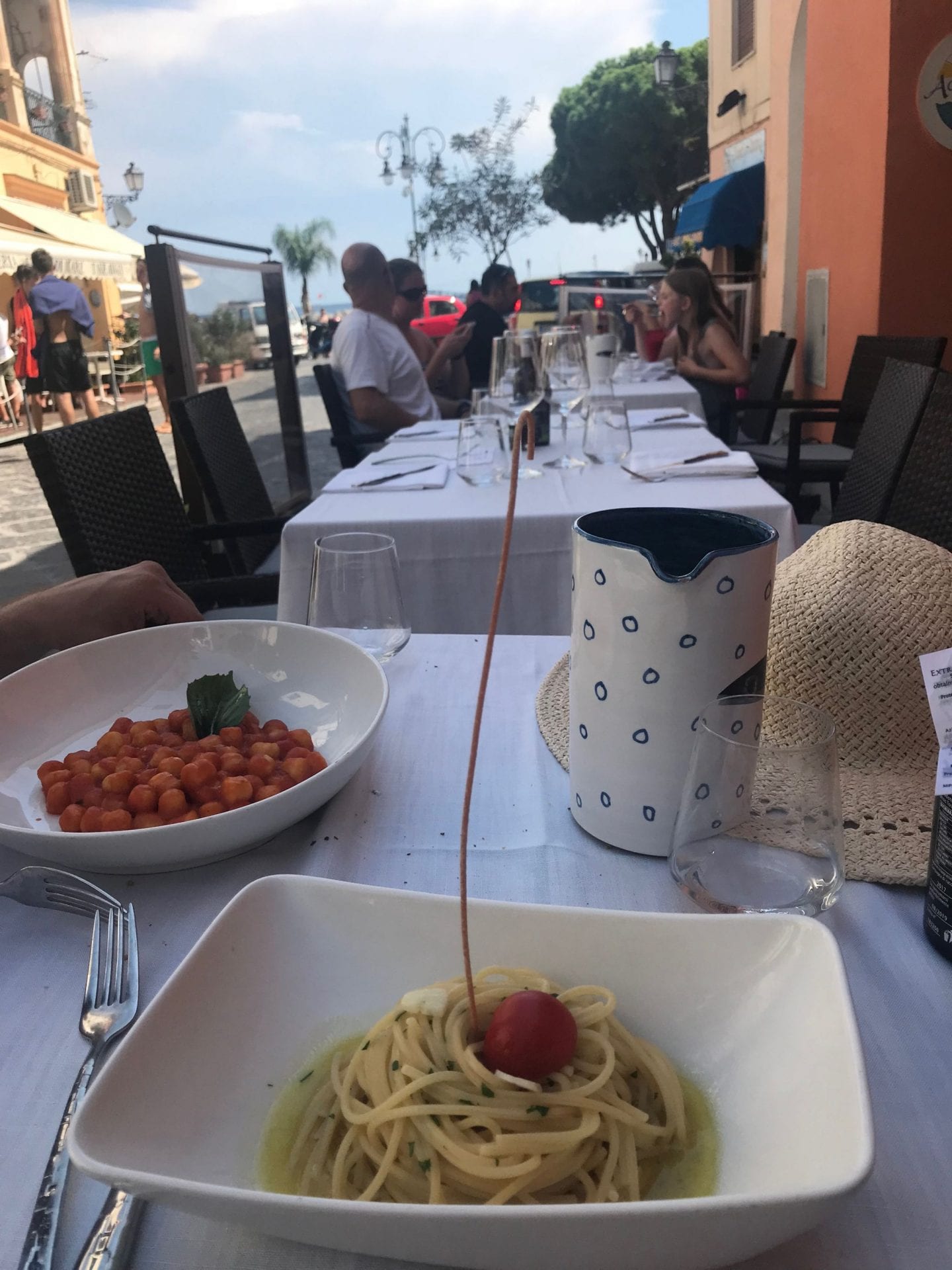
Just one bend after Cetara, there is the seaside hamlet of Erchie, which, legend has it, was founded by Hercules when he arrived in Italy from Greece.
We only stopped for a quick picture of the ancient Norman tower here which dominates the seafront and divides it into two little beaches.
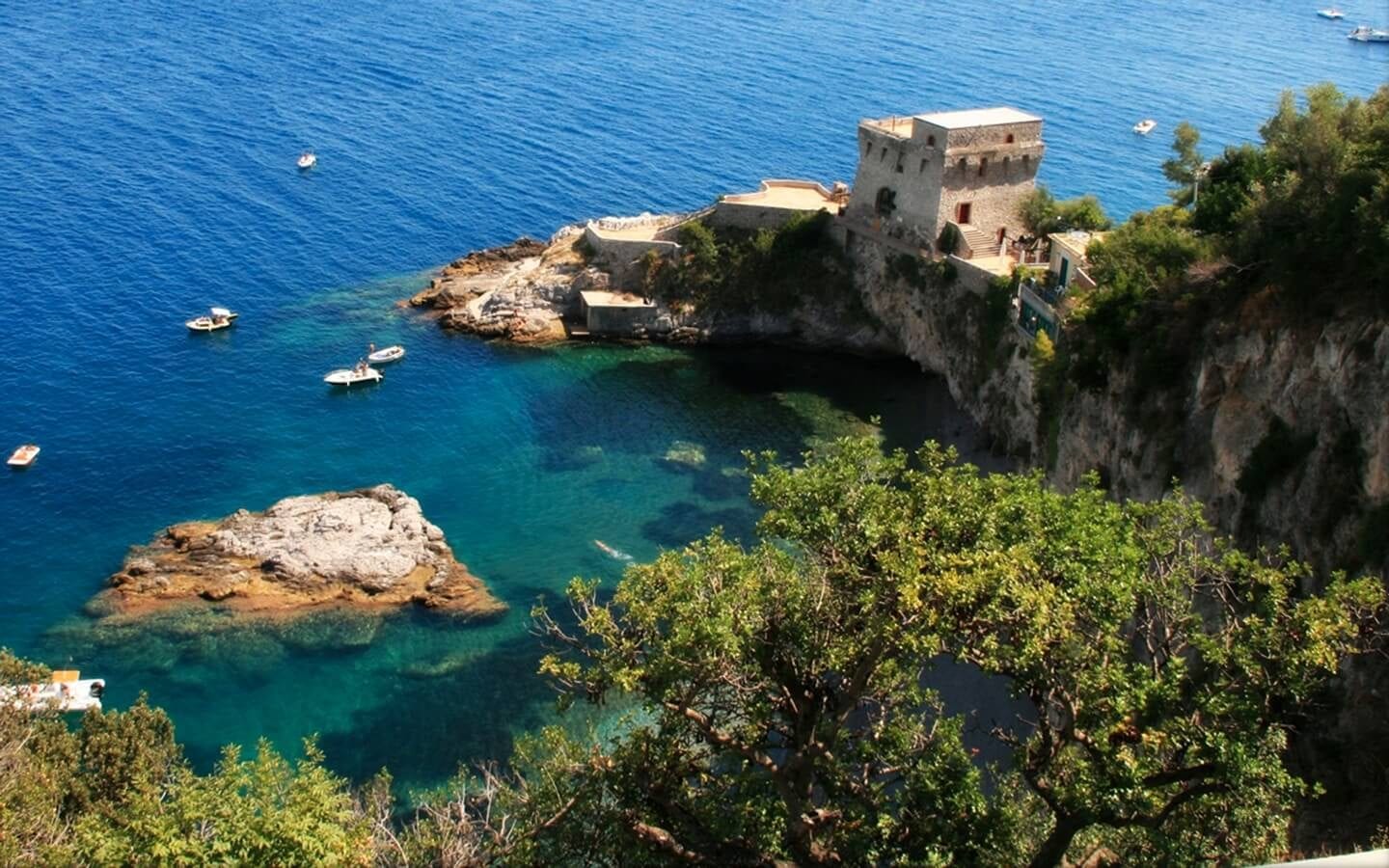
Our next stop was Maiori. Flanked on the east side by another imposing Norman tower, converted into a restaurant, and on the west side by the Castle of San Nicola de Thoro-Plano, a castle rebuilt in the 15th century and open to the public, Maiori offers the longest beach-line of the entire Amalfi coast. The colourful umbrellas of the beach clubs were protecting lots of tourists from the strong summer sun rays. We weren’t much interested in sun bathing rather hungry for more exploring…
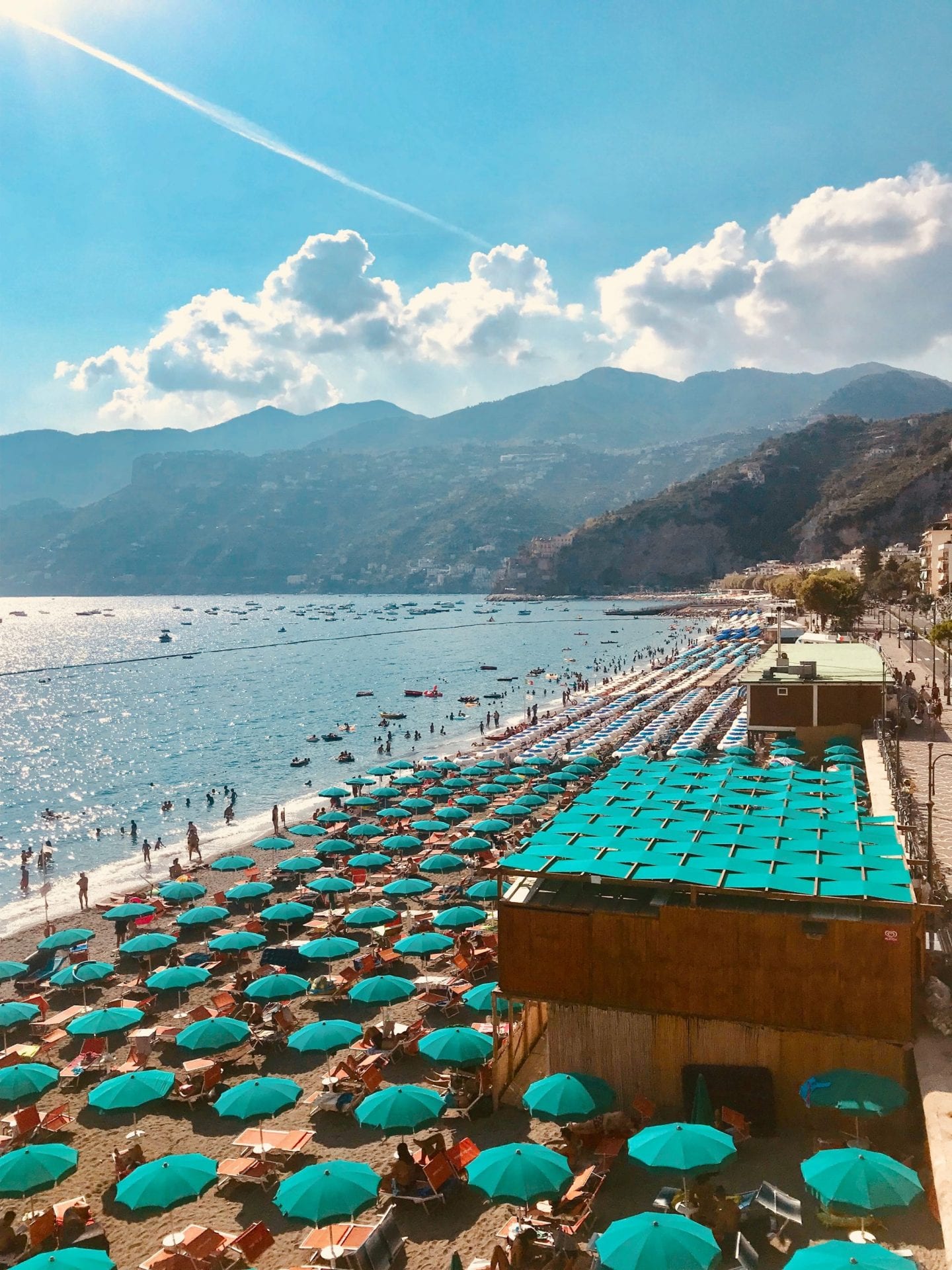
So after a quick Aperol Spritz stop at Torre Normanna we decided to go off the beaten path for a mini sunset adventure. We headed to “Il sentiero dei limoni” (the lemons pathway) an old back street that connects the two villages of Maiori and Minori. It only takes an hour to walk and you’ll be rewarded by lovely views of the coast as well as finding yourself surrounded – literally – by crops of lemons, one of the most characteristic activity of the Costiera. Minori in particular is famous for the production of Limoncello.
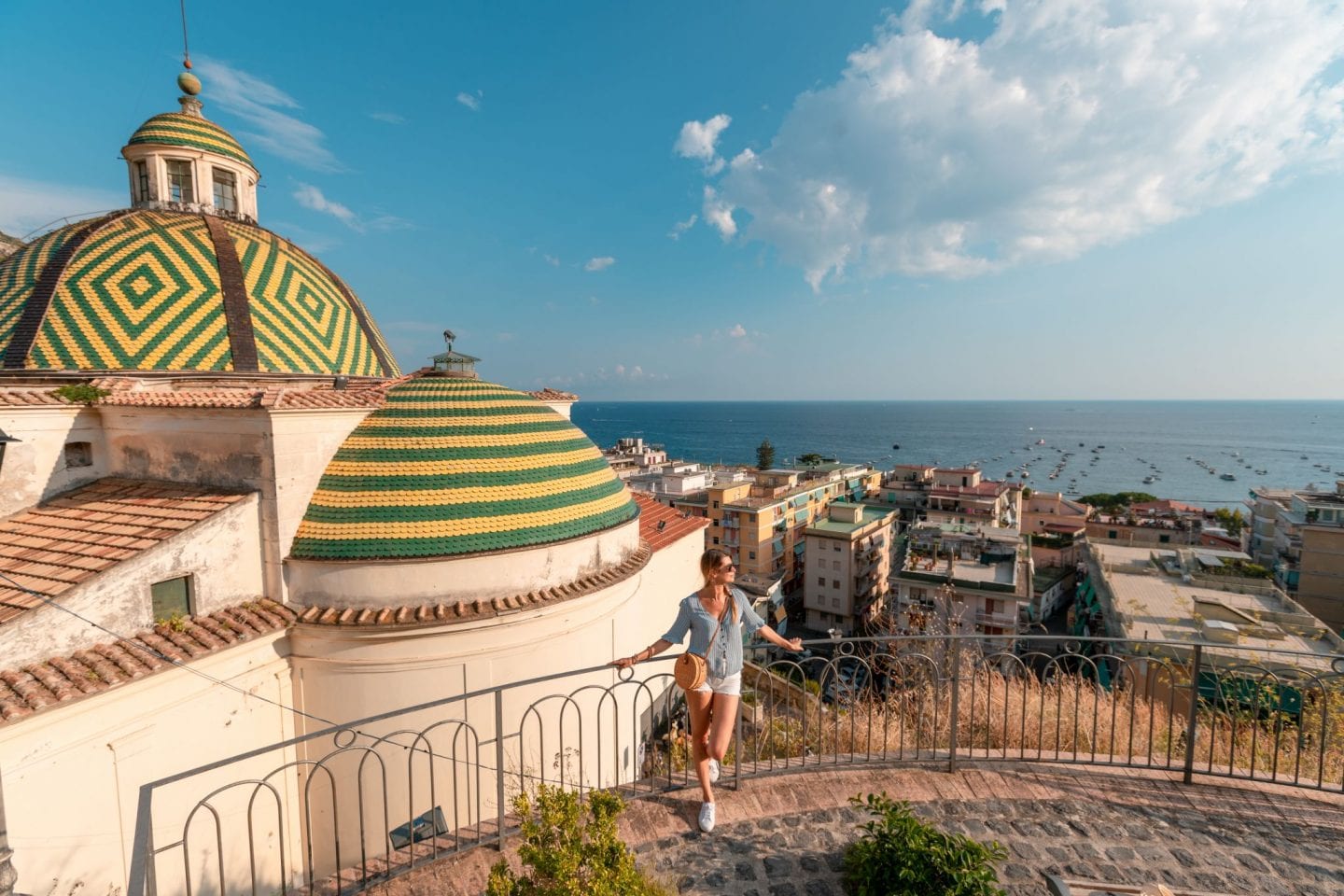
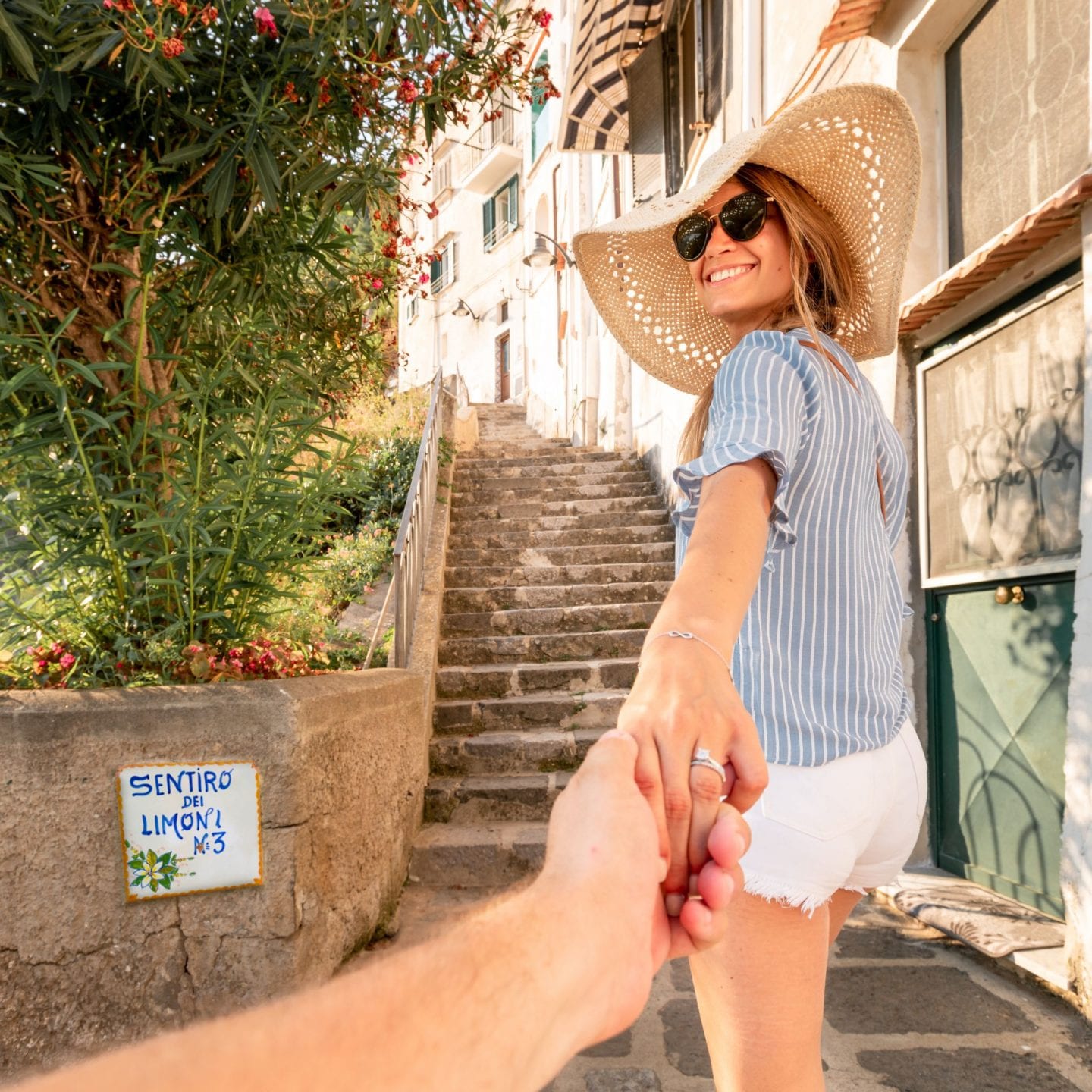
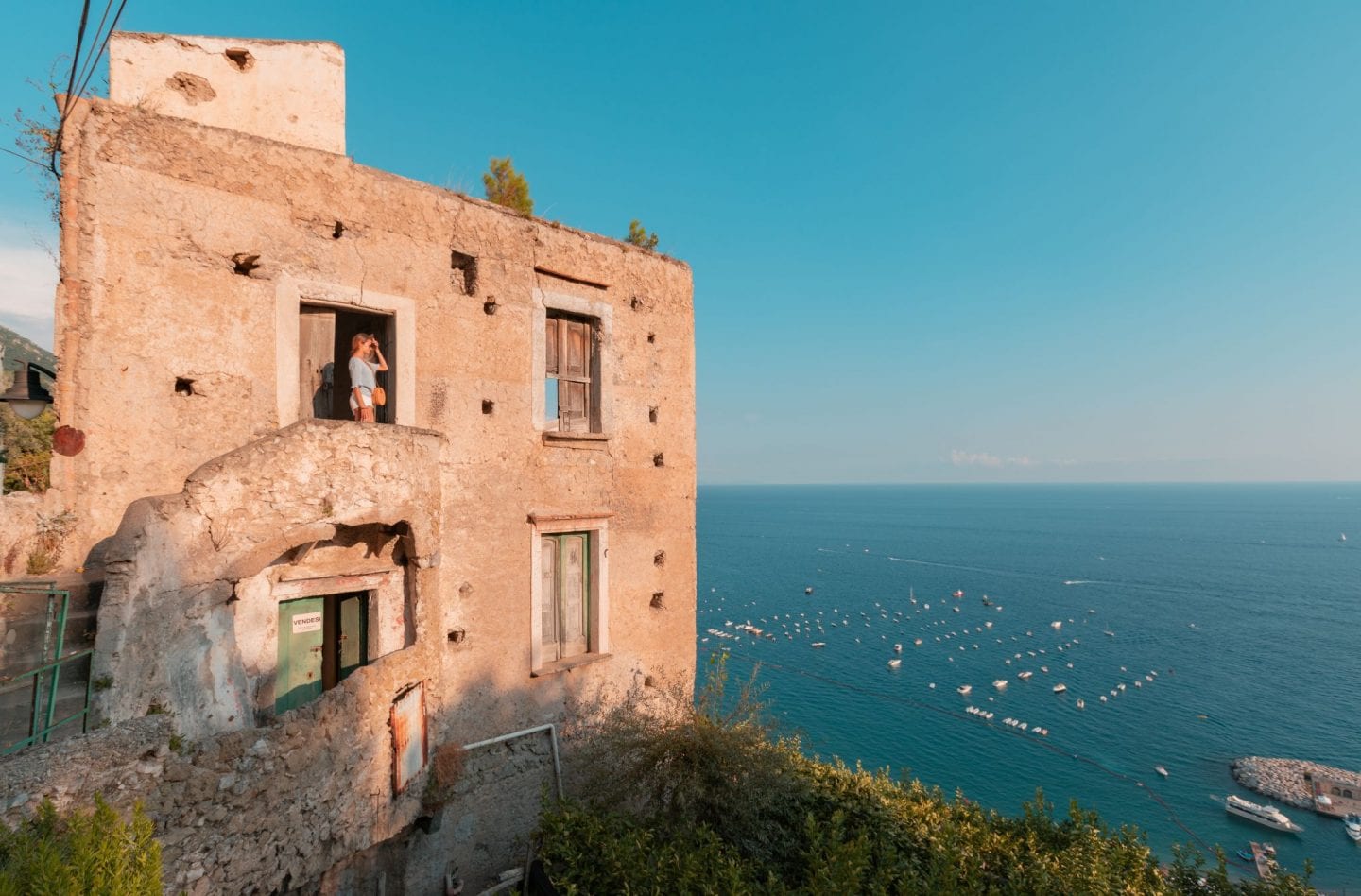
Our tour started from Santa Maria a Mare a Maiori, the beautiful cathedral of the town with its famous cupola is covered with majolicas. Here there is a quite steep set of steps that leads to the path. The rest of it was easy to walk and it’s almost impossible to get lost.
We then went back to our scooter, which was parked in Maiori and drove to Amalfi for dinner, which is only 10 minutes below of Ravello. We had a tasty plate of “calamari”at the restaurant Piazza Duomo, right in the main square with a view on the beautiful “duomo” (cathedral).
DAY TWO
Time to explore the “oh-so-fancy” Positano and see what all the fuss was about.
So right after a rich breakfast at Hotel Rufolo, we drove towards West.

It took us one hour to get there but straight away we could see why it’s the most popular destination of the Costiera. To welcome you in the town there is a hill drop studded of bright and colourful houses. The beautiful majolica tiled dome of the Collegiate Church of Santa Maria Assunta can be seen from every corner of the town. Positano is the largest out of all the towns of the Costiera, so schedule in more time for your visit if you want to appreciate its beauty.
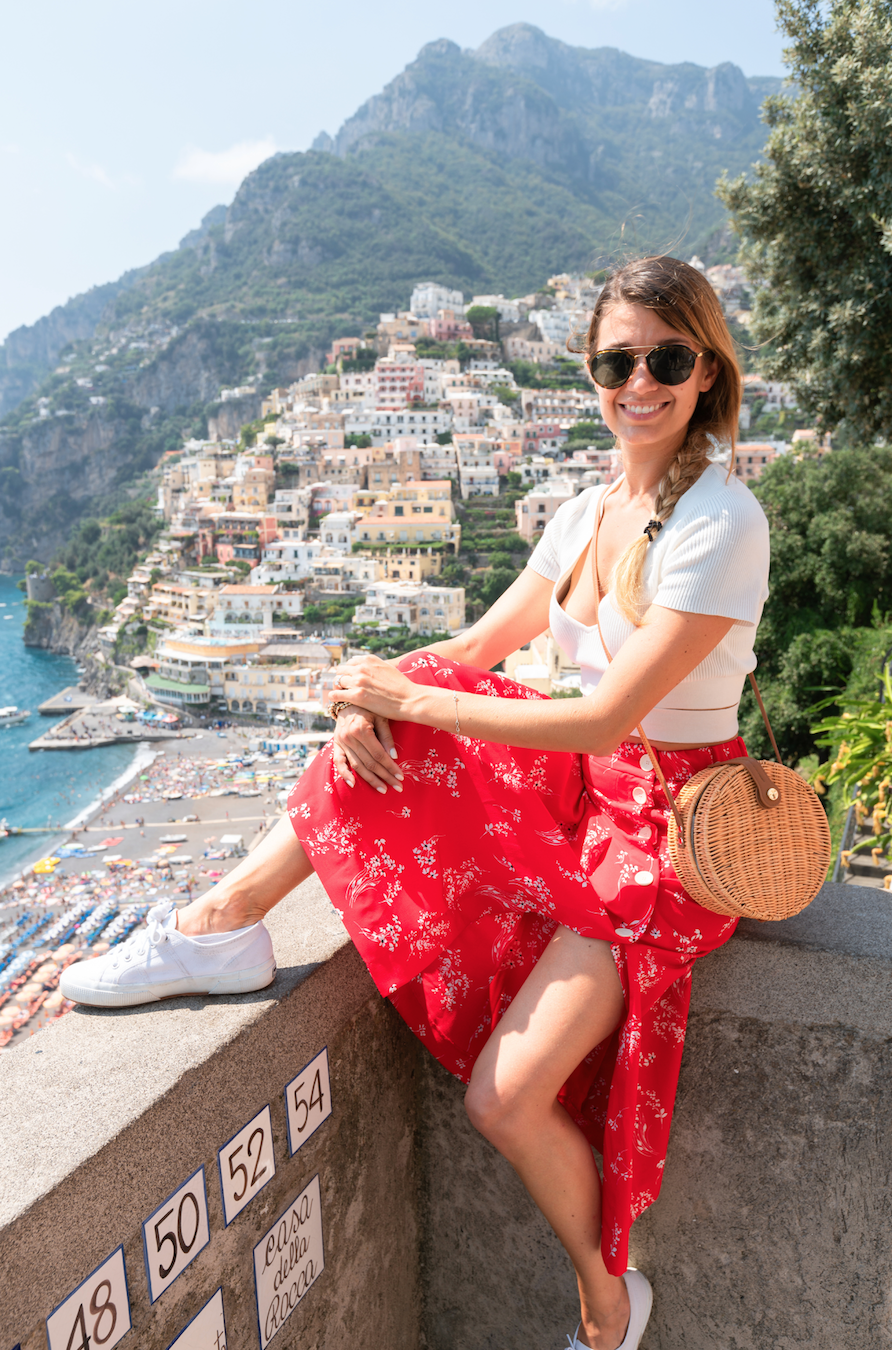
We spent the whole morning waking through the winding and narrow stone pathways, filled with local shops, restaurants and characteristic residential alleyways. We then stopped for lunch at Ristorante la Pergola, right on the beach – a little pricey – €16 for a Caprese salad – but good food. Spiaggia Grande is the heart of Positano’s sea front. 300 meters long, the beach is one of the largest on the Amalfi Coast, and one of the most glamorous too. Expect lots of tourists if you go in high season. Again we were more interested in discover new places rather than laying under the burning sun, so we hit the road after lunch. We stopped by Furore, another little hidden gem and a must see. Furore features a true natural wonder: a fiord, which is very unusual to Italy. The dramatic fiord is rinsed by turquoise water with a nice beach sprinkled with colourful fishing boats and framed by a green precipitous gorge.
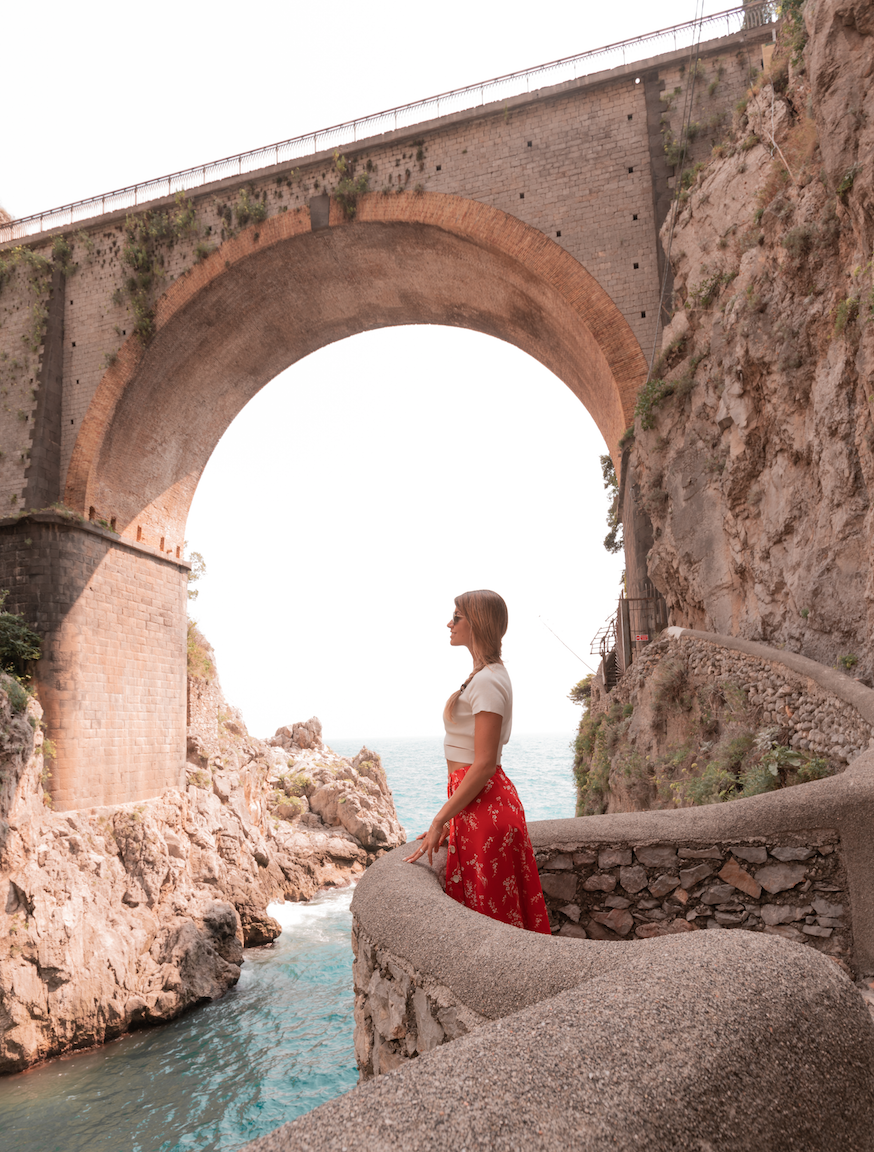
Not too far east from Furore there is the little town of Cava dei Tirreni which with its Emerald Grotto attracts many tourists. Please note, that the lift to Emerald Grotto is right on the road with no real parking space a part for a little lay-by. We decided not to go, as at that time of the day it was really crowded and we didn’t really find appealing the idea to sit on a small boat with 20 other people for a 10 minutes experience. We’d recommend, if you want to appreciate its 1000 stalactites and stalagmites, to go fist thing in the morning when it opens – 9am (Ticket is 5€).
In the meantime it started raining so we decided to visit the cathedral of St. Andrew in Amalfi – €3 for single entrance.
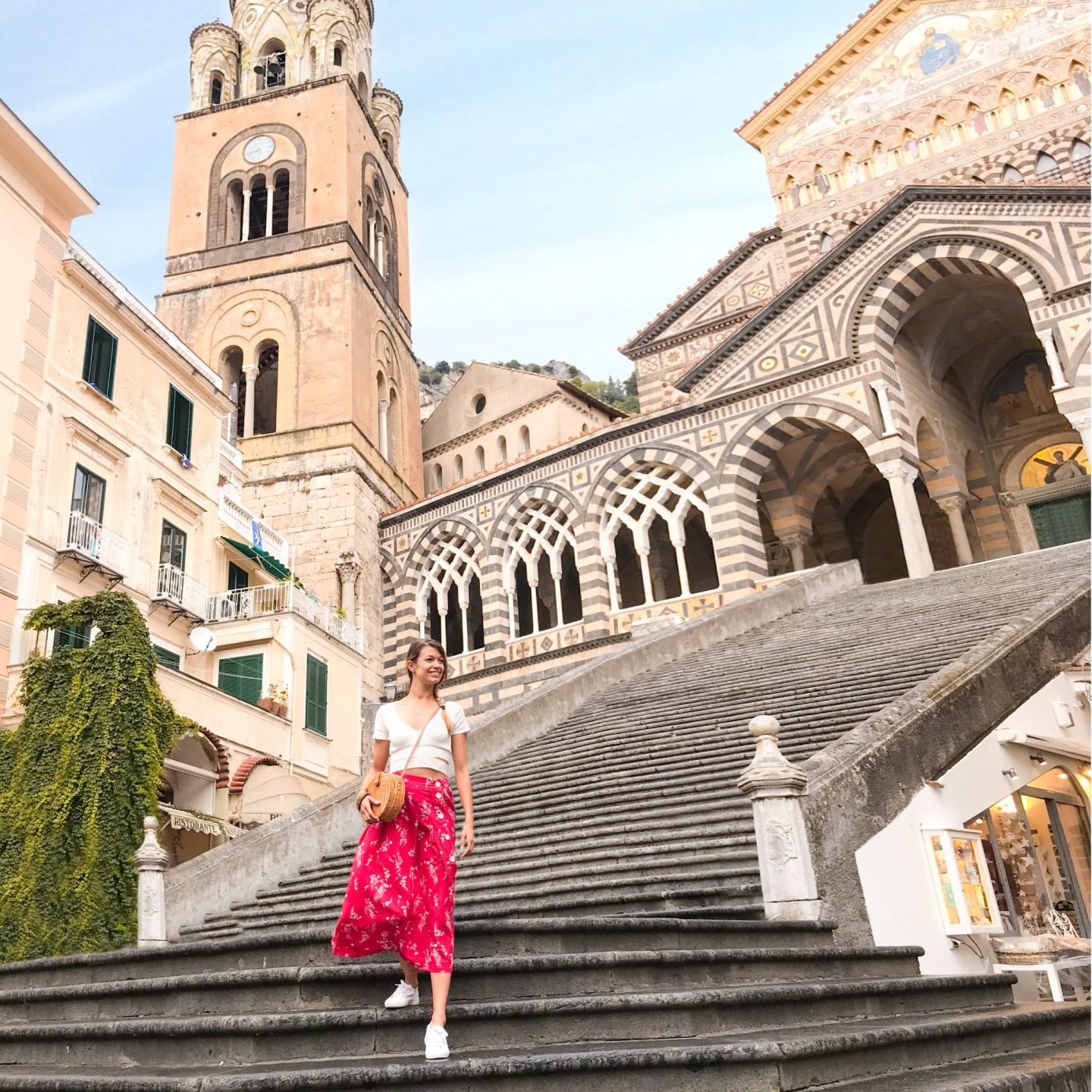
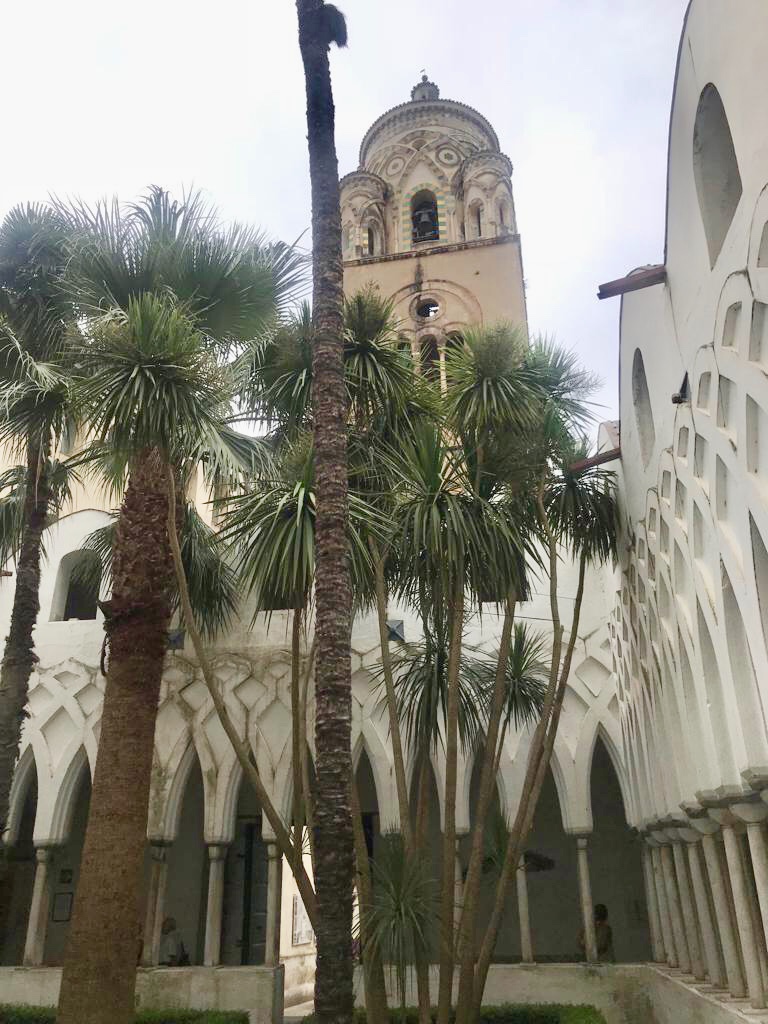
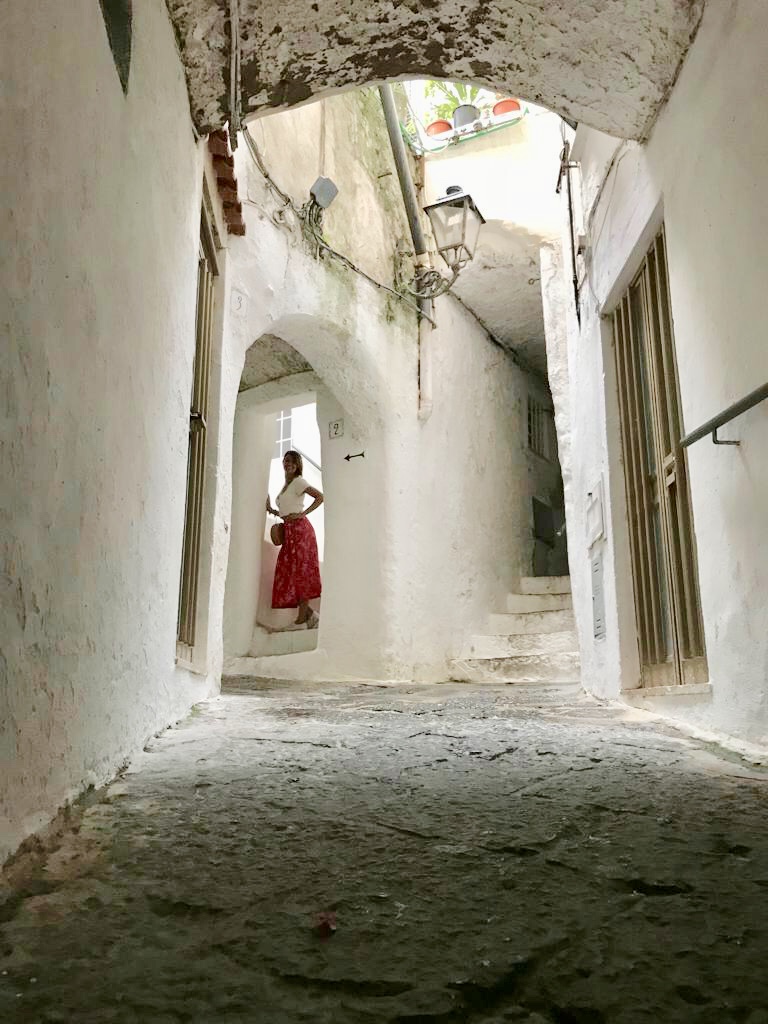
The historical building is impossible to miss as it is dominating the main square of the little town, imposing itself as main feature. Built in the early 1200s, the cathedral features a dramatic location atop a steep flight of stairs, and an Arab-influenced exterior. It takes its name from saint Andrew Apostle, patron of the town and who’s relics are kept in its crypt. Connected to the cathedral is an older basilica (now a small sacred arts museum) and the fascinating Cloister of Paradise, both containing medieval murals. The Cloister of Paradise, was definitely one of the highlight of the visit. Built between 1266-68 to house the tombs of Amalfi’s wealthy merchants, it features slender double columns and Moorish-style arcades made of pure white marble.
We then had fun strolling through the town’s labyrinth of little lanes and alleyways.
Quite tired from the day of exploring we decided to stay in Ravello for the evening. We went to Ristorante e Pizzeria da Vittoria. Excellent service and food – definitely a place I’d recommend to go. I had their speciality sea bass; the whole process of the fish being cut and removed from its cast of salt entertained not only us but also other guests in the nearby tables. And yes! It was delicious!
DAY THREE
As soon as we woke up we visited the beautiful gardens and terrace of Villa Cimbrone in Ravello, this is a hotspot for anyone wanting to enjoy the magic of this town. The gardens of the villa are simply stunning and the view from the Infinity Terrace was breathtaking. Don’t miss the little cloister and crypt too, they really worth a visit!
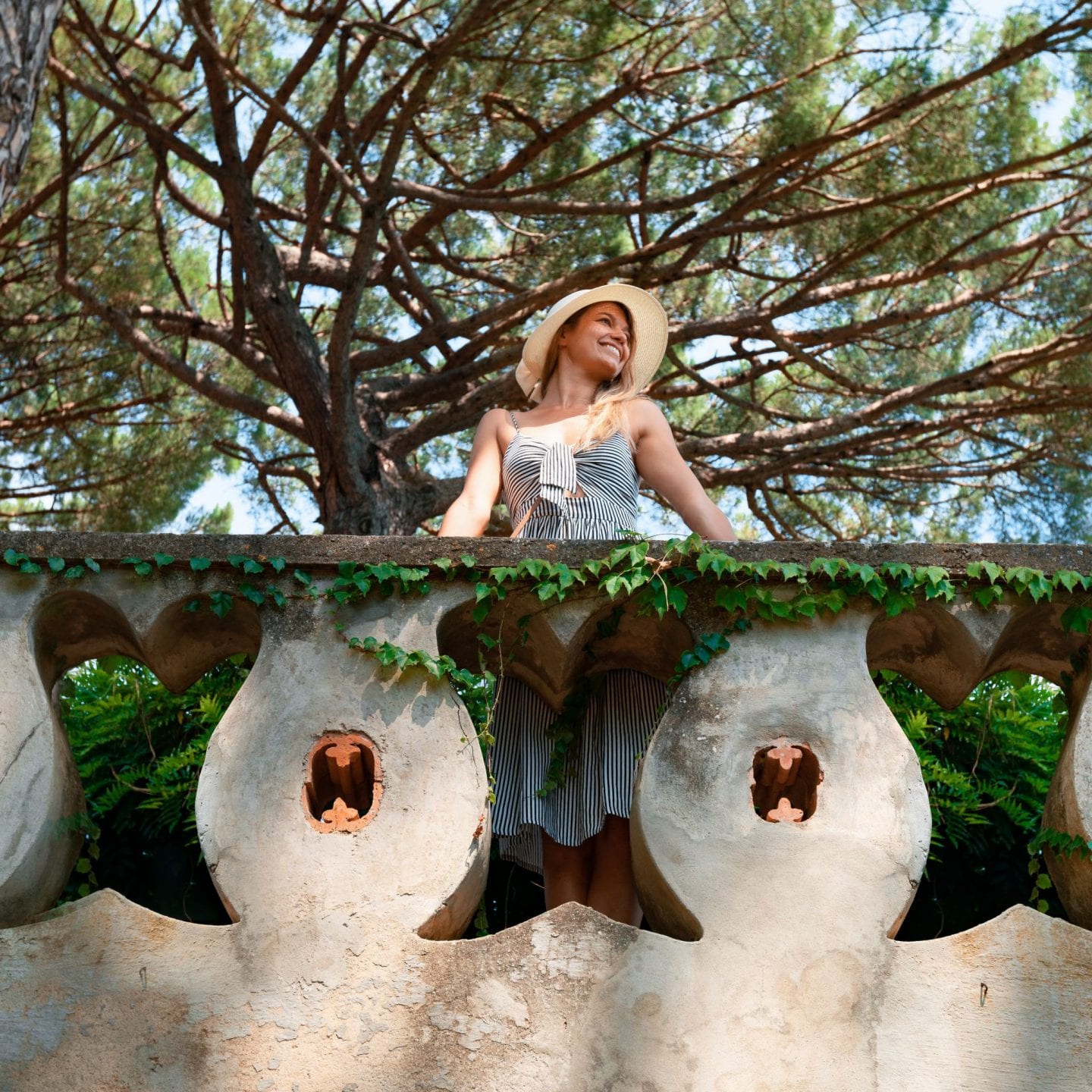
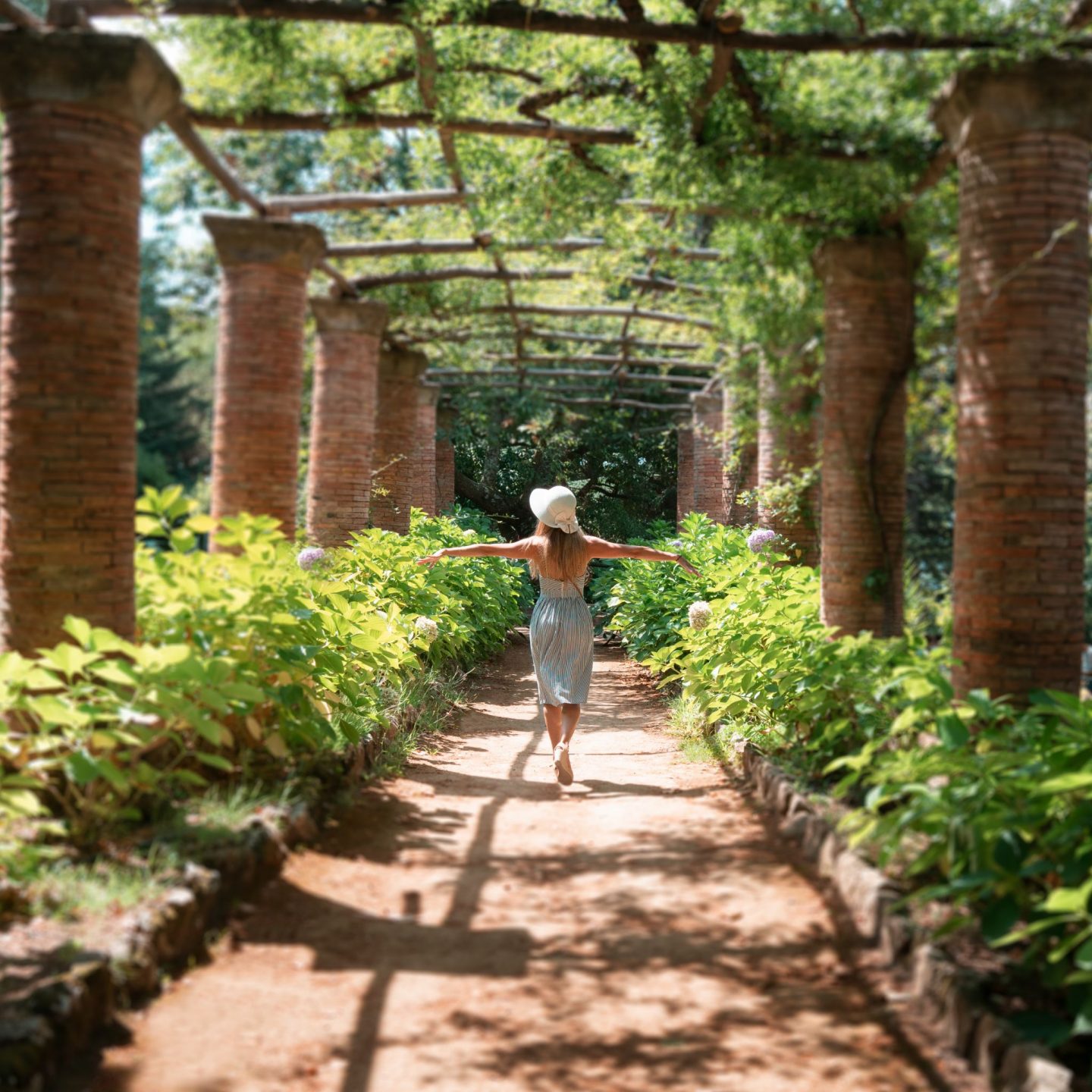
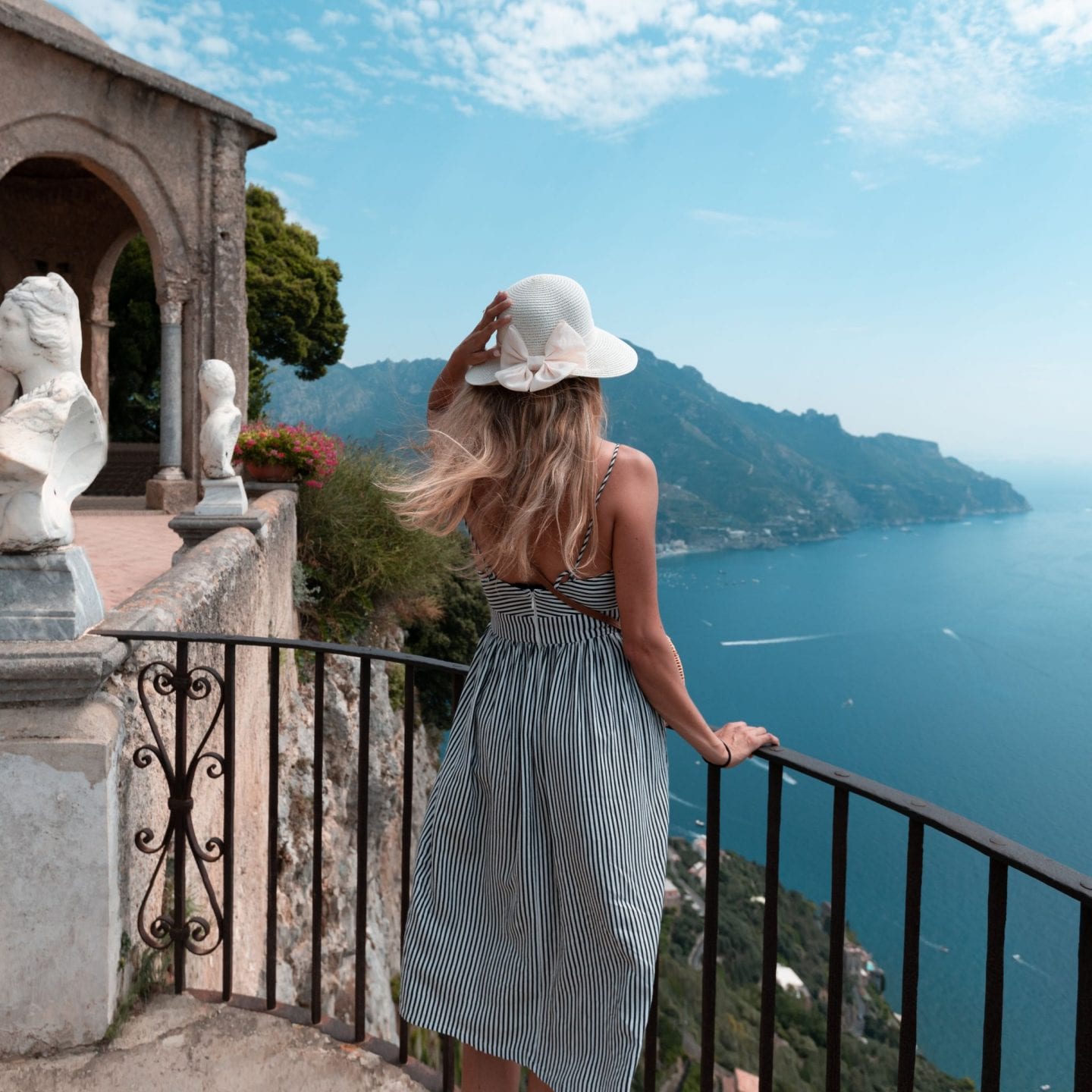
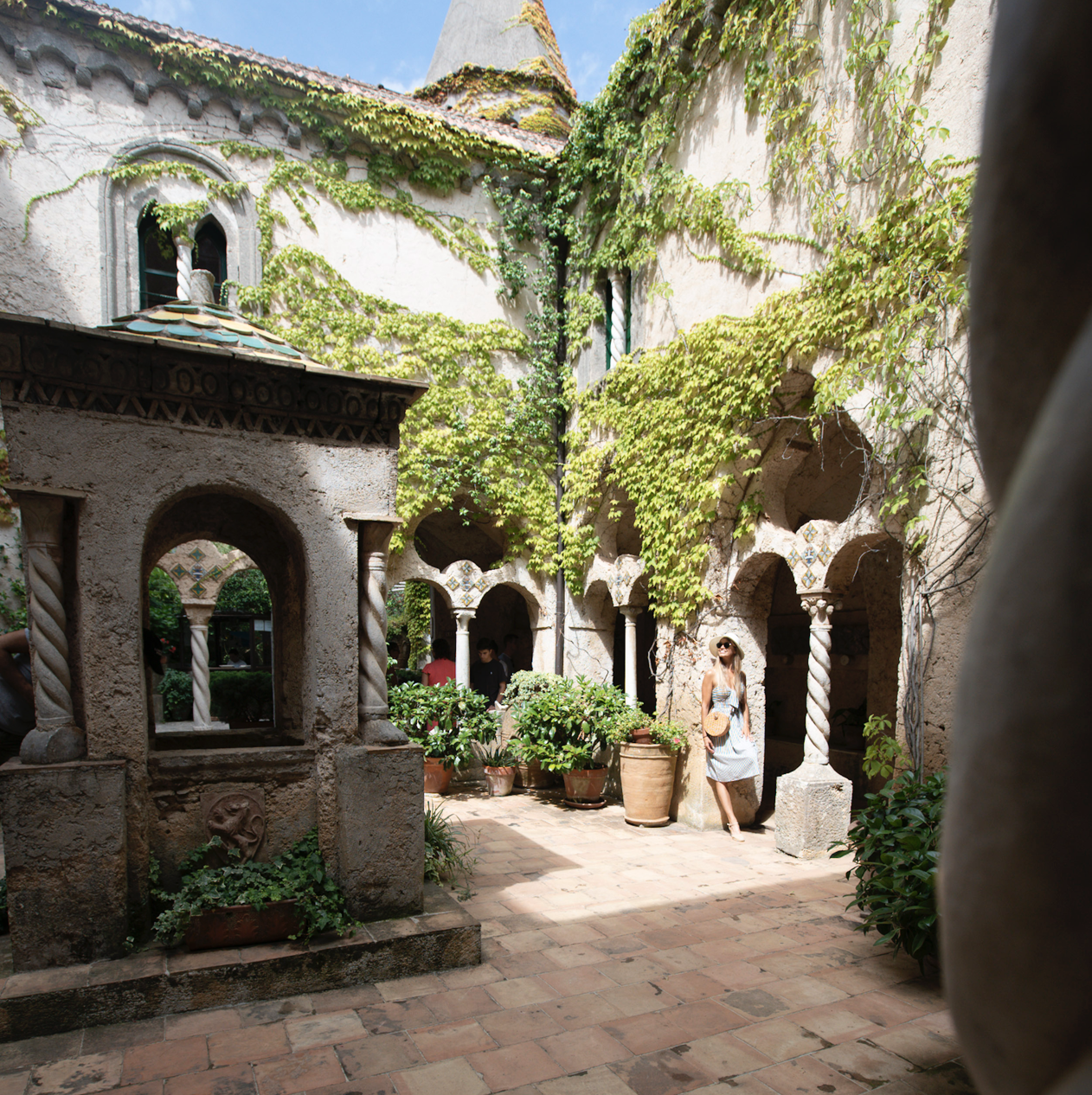
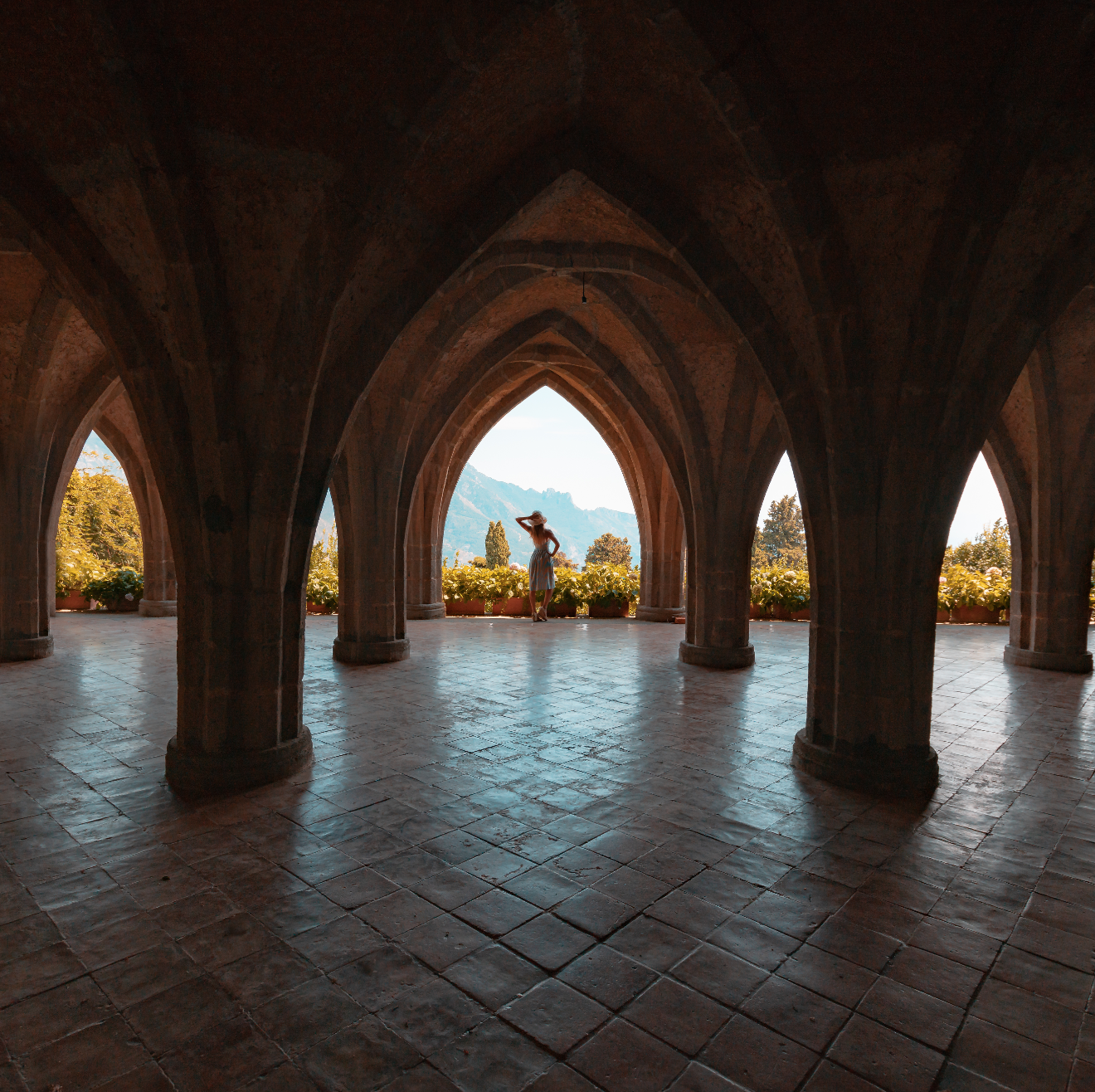
The option for the rest of Day three was to take the public ferry and go to visit Capri. Our gut feeling was that it would have been very crowded though and we wanted to spend some romantic time together. So we opted for the private boat hire option.
We hired a small motor boat from Amalfi Sails which without skipper was 250€ for the whole day plus cost of the petrol (about €50).
In total honesty, there is nothing that I’d recommend to do more! Paul, my husband, was driving – such a laugh! – and we had a really fun day, re-visiting the locations we’ve seen in the previous couple of days from a completely different prospective. Such a great escape from the crowds and the confusion.
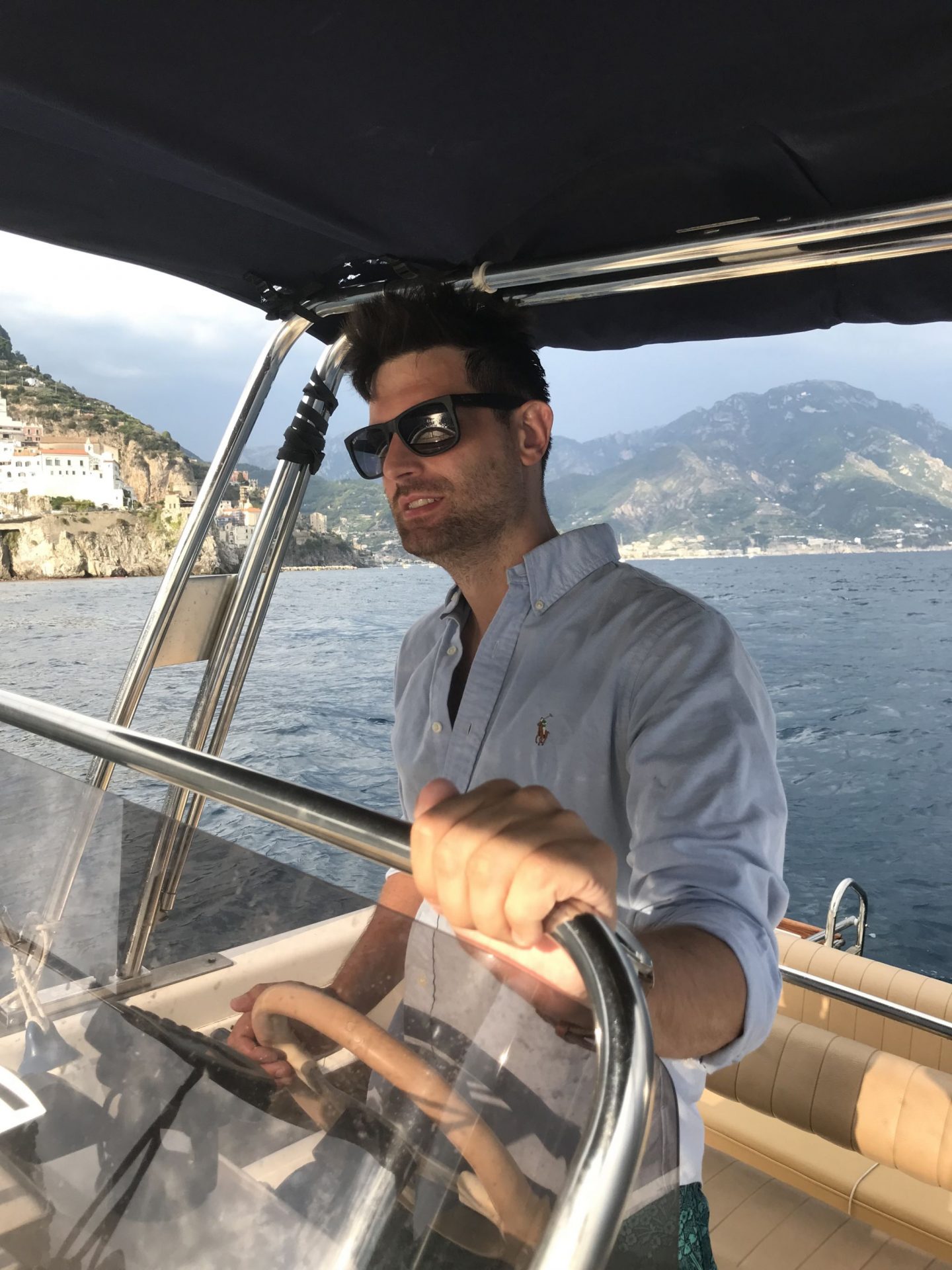
First thing we drove to the three islets of Li Galli, just off the shores of Positano and often referred to as the “Sirenuse”. Legend has it they were inhabited by Sirens who attempted to seduce with their song all those who sailed nearby. The main one ranks as one of the world’s best private island for the illustrious guests which hosted (Rudolf Nureyev, Greta Garbo, Sophia Lauren, Jacqueline Kennedy amongst others). We stopped the boat nearby its green coastline and dipped in the blue clear water. Amazing!

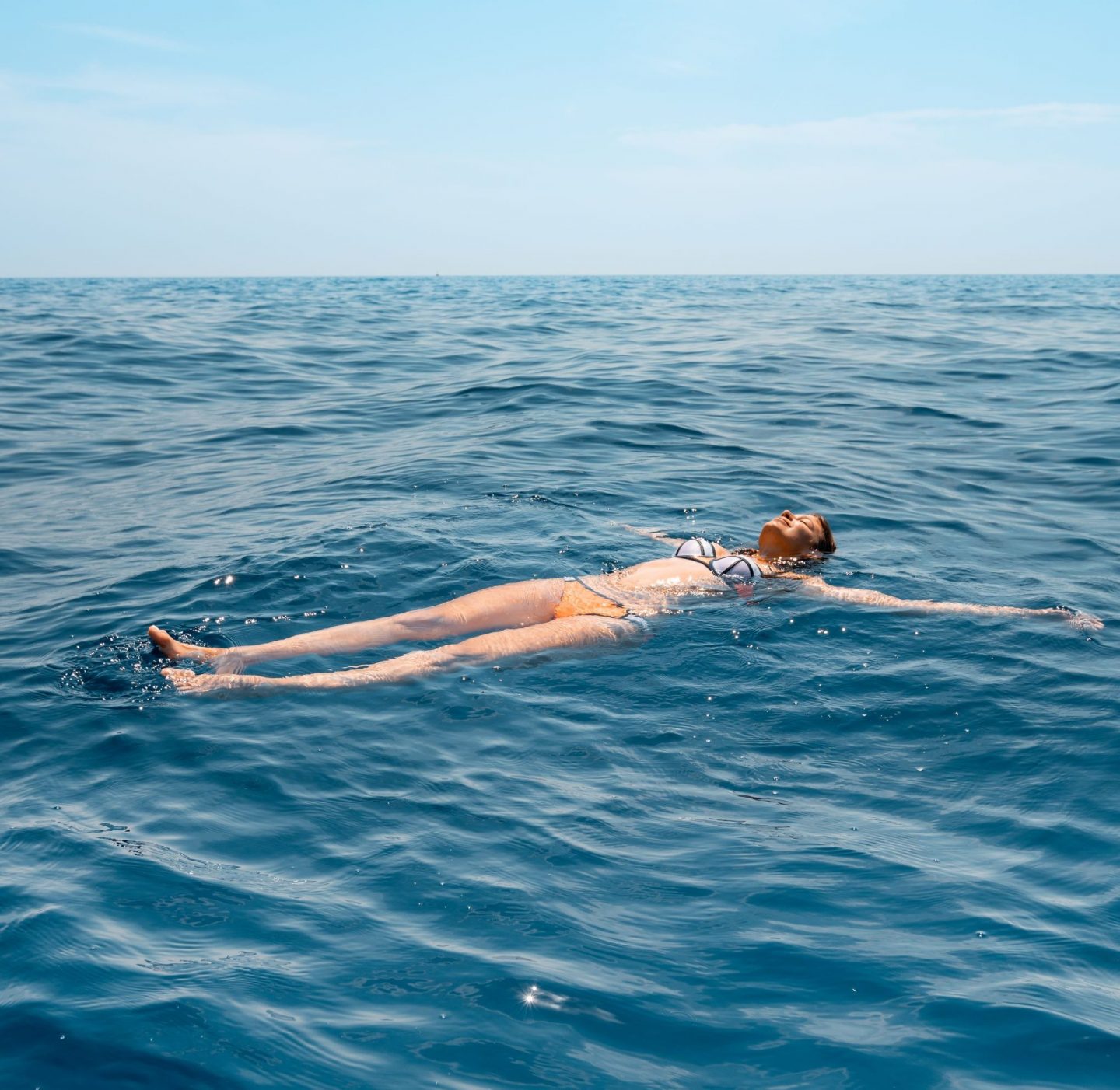
We then headed to Positano for lunch…Seen from the sea, Positano is set in a dramatic panorama of colours; the green of the Monti Lattari, the white, pink and yellow of the Mediterranean houses, the silvery grey of its pebble beaches and the blue of the sea.
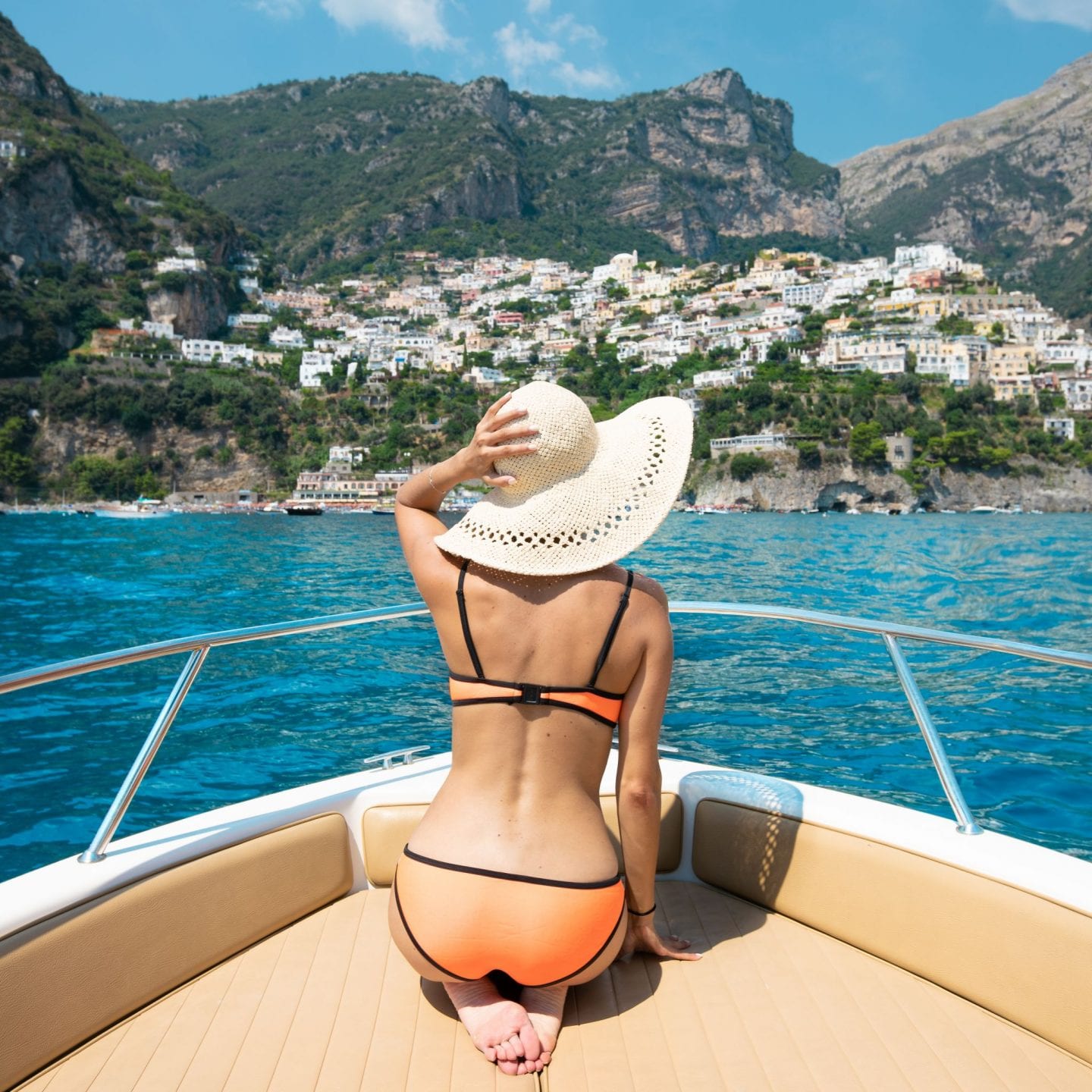
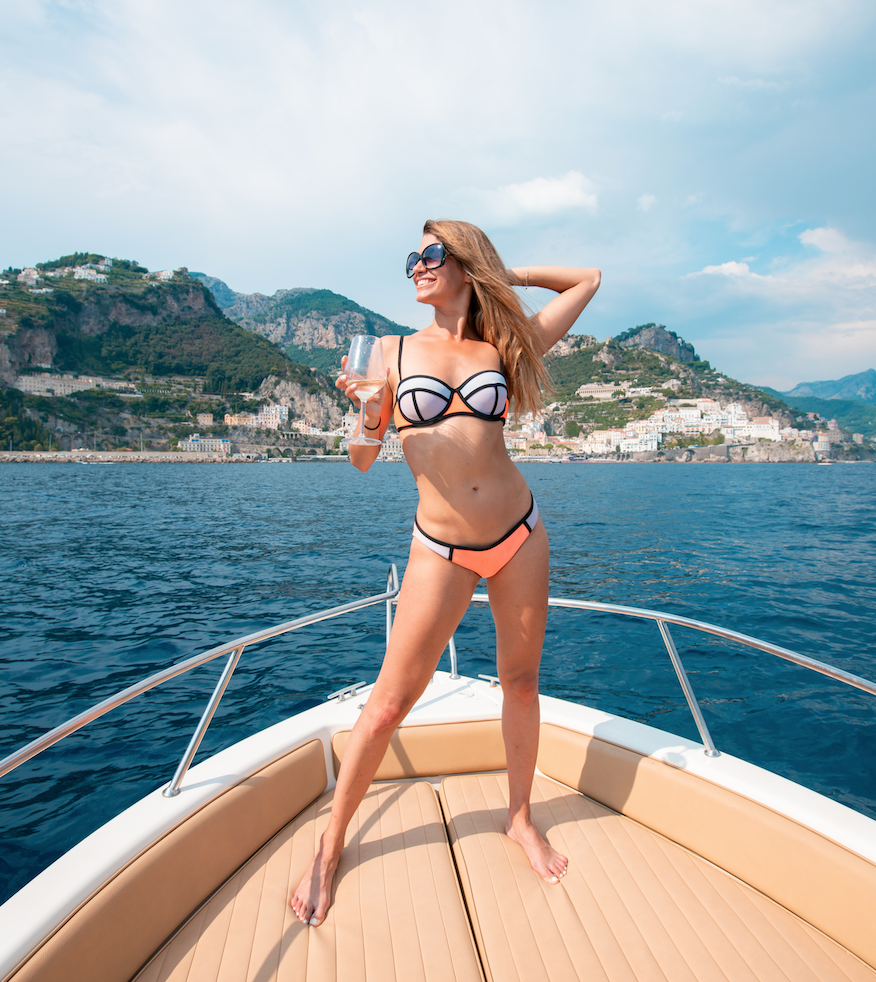
There is a parking service when you approach the harbour – and you need to pay a fee of €20 to moor the boat. We had a quick lunch and didn’t spend too much time in-land to make the most out of the boat.
We stopped by the Furore fiord for a quick splash and then sail by the entire coastline.
Seeing the towns from the sea meant we could appreciate each of them in its full beauty, just like a 3D postcard.
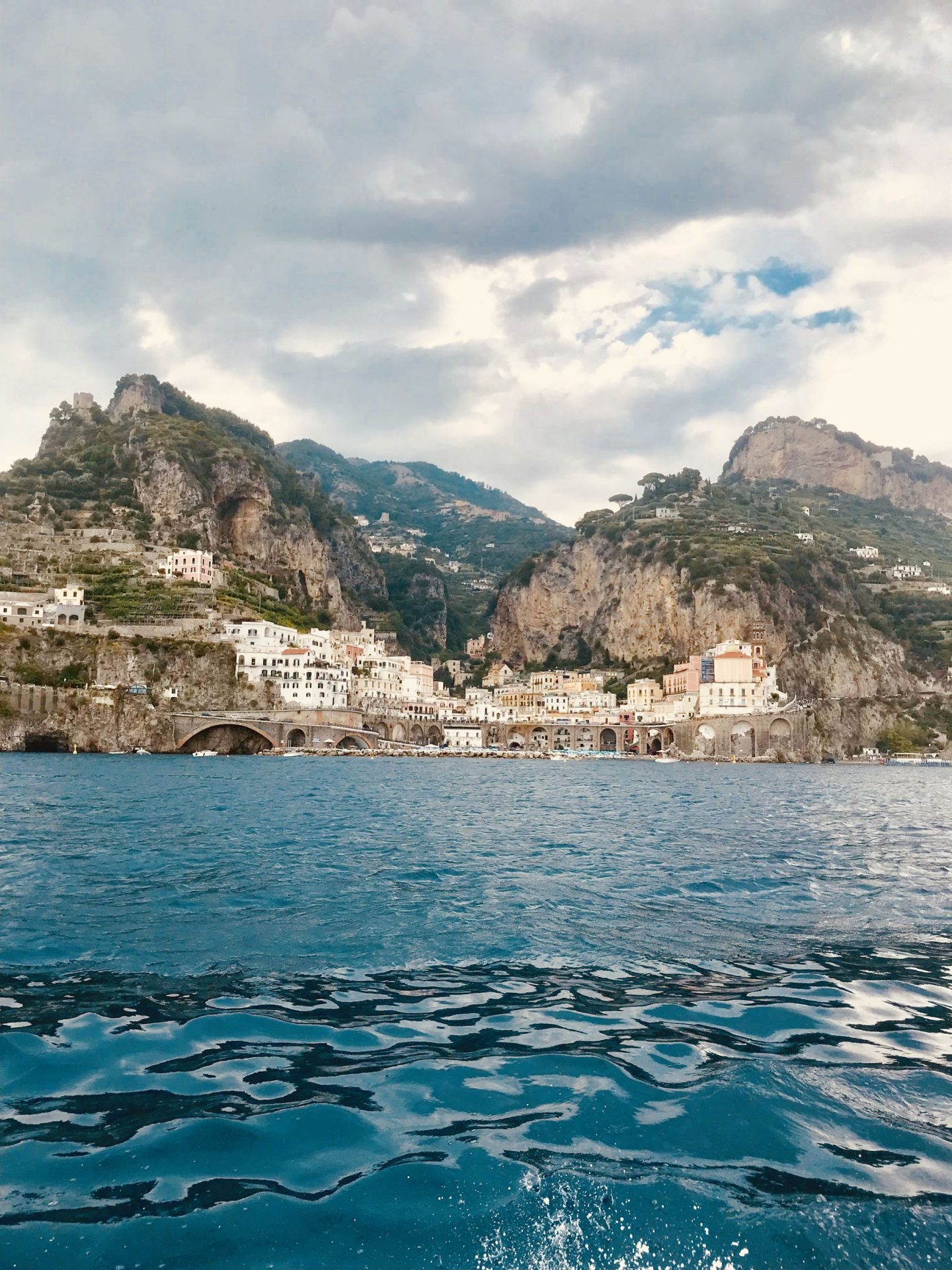
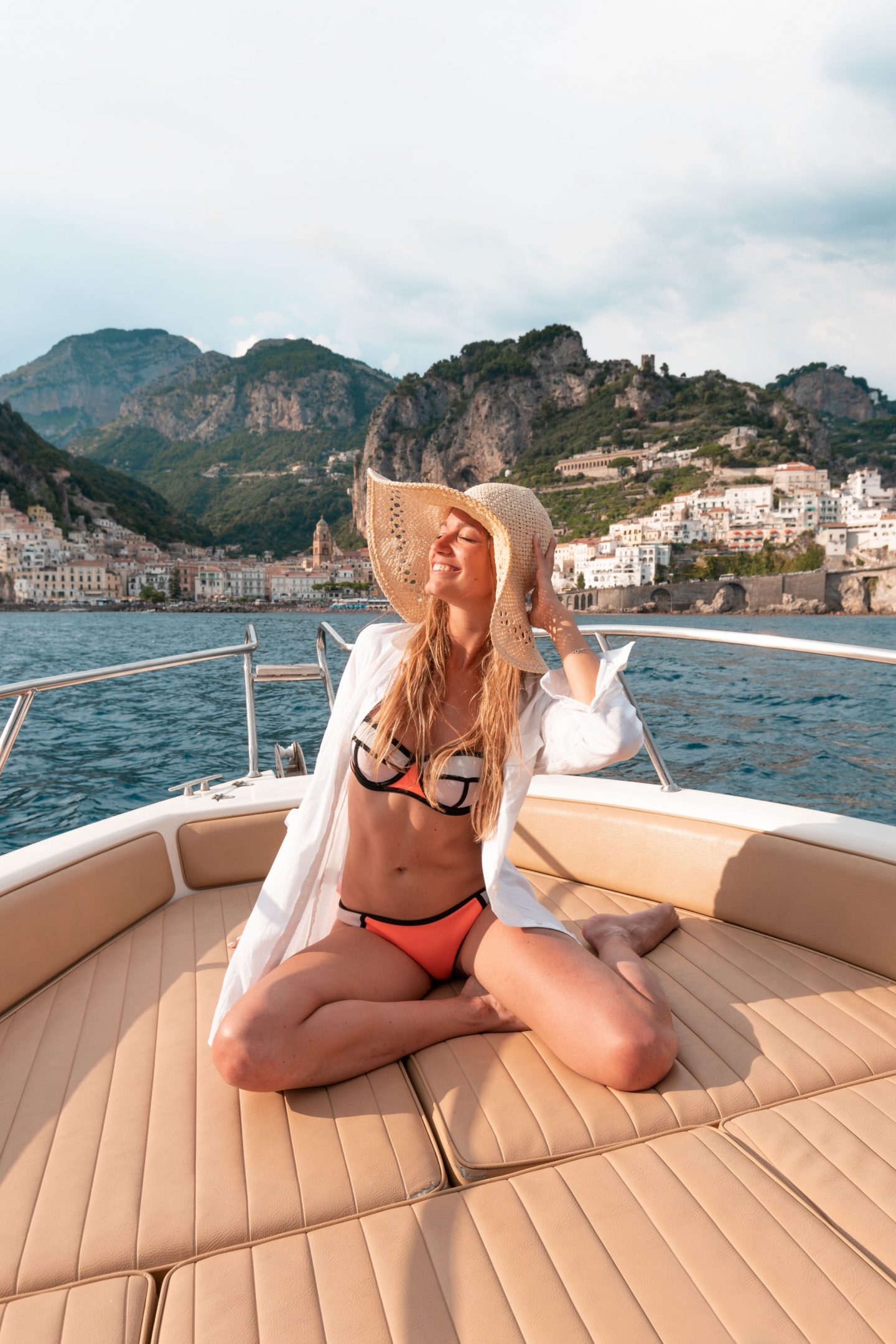
At about 6pm we came back to the Amalfi harbour, Marina grande, from where we departed.
We walked to the nearby city of Atrani for an “aperitivo” (pre-dinner drinks and canapes) in the main square. Atrani is the only city in the Amalfi Coast that preserved its antique, traditional characteristic of fishing village. While just around the corner from Amalfi town, it feels miles away from the swirling buzz nearby, with its friendly locals, intimate trattorias, and quaint fishing hamlet feel.
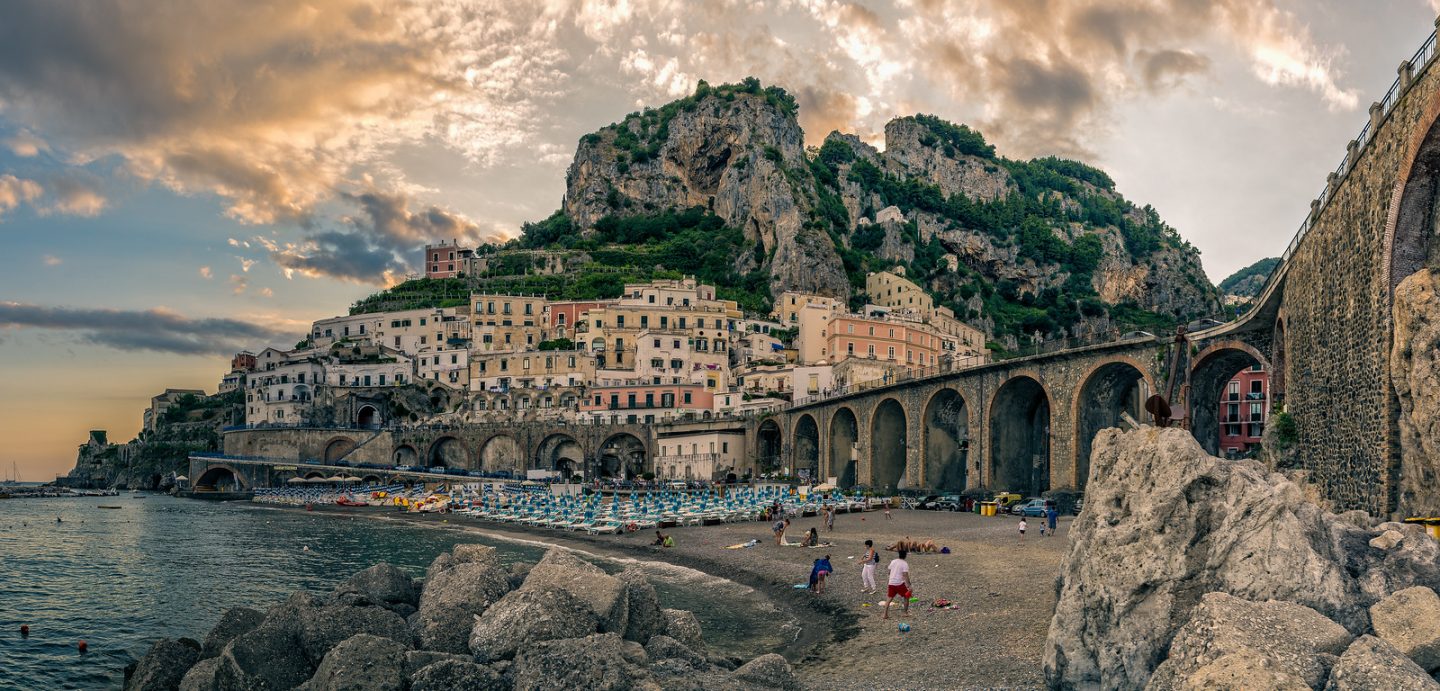
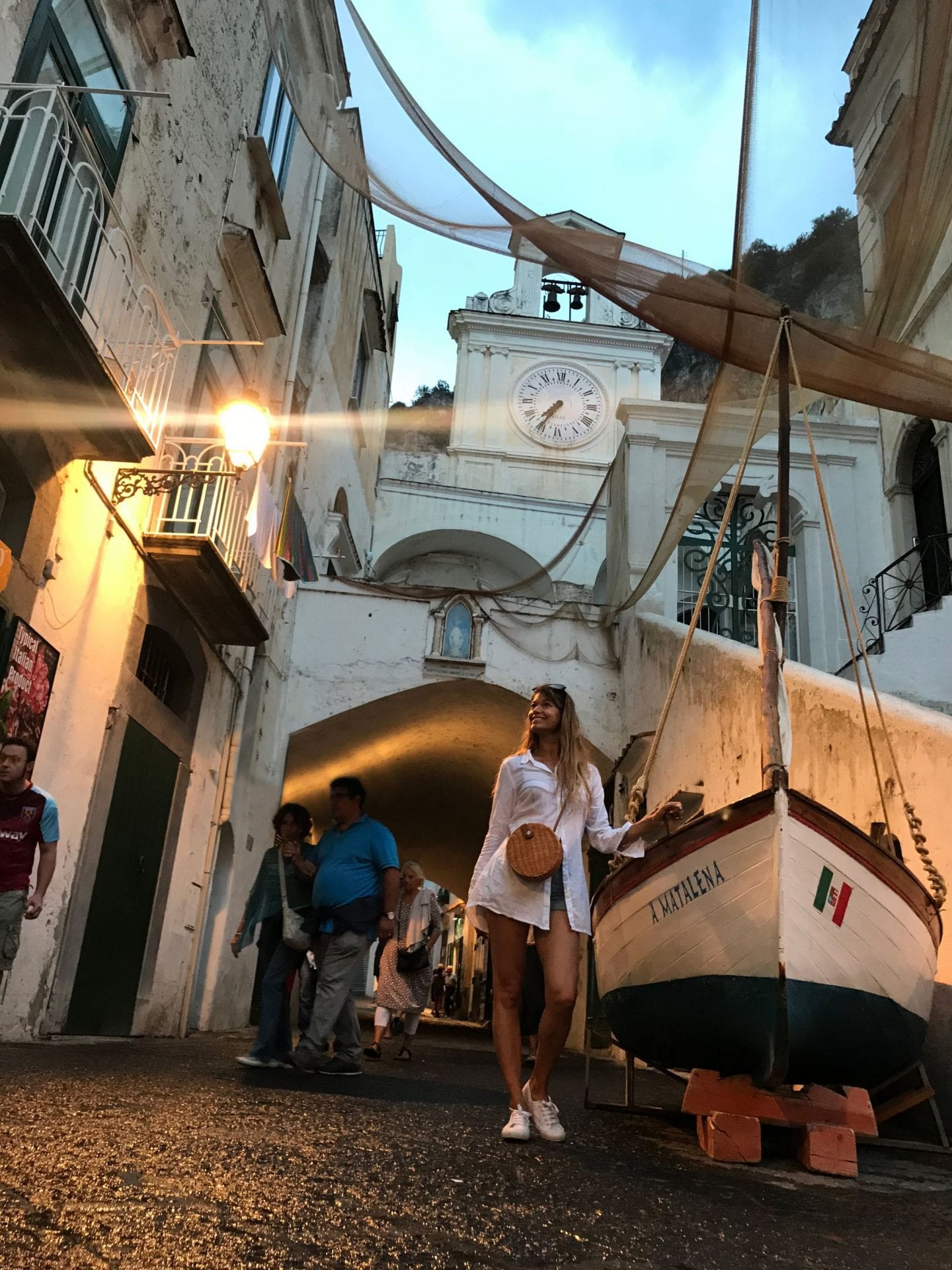
We headed back to Ravello for dinner.
Since 1953 in the gardens of the Villa Rufolo of Ravello, takes place a prestigious Musical Festival, that starts in early April and goes on ‘til the middle of November, and its one of the most important cultural and social events in the Amalfi Coast. The Belvedere of Villa Rufolo is a terrace suspended on the sea, offering a stage equal none to the orchestra performing for the 800 people audience.
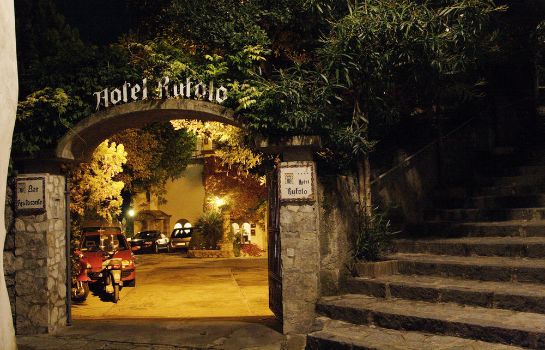
We were lucky enough to stay in the hotel nearby villa Rufolo so we could hear the concert from the terrace while dining at their in-house Michelin rated restaurant – Ristorante Sigilgaida – we could also see the orchestra.
I would definitely recommend to add the Amalfi Coast to your bucket list of travels if it’s not there already, even just for a short stay, as it is a truly special and magical part of the world.
Have you been to the Amalfi coast? What was your experience of it?

